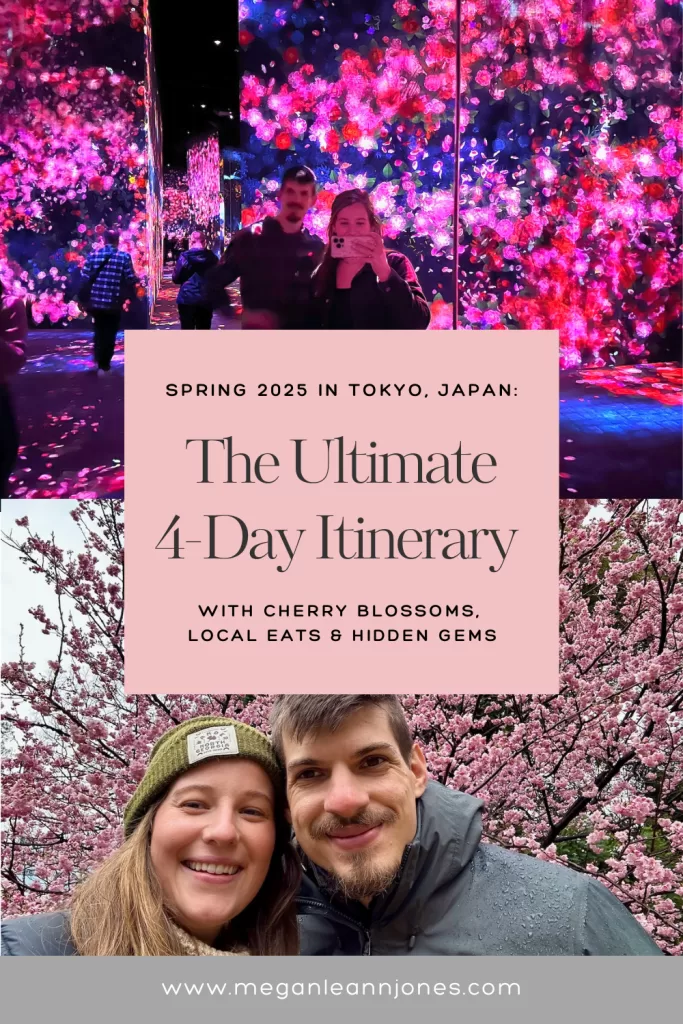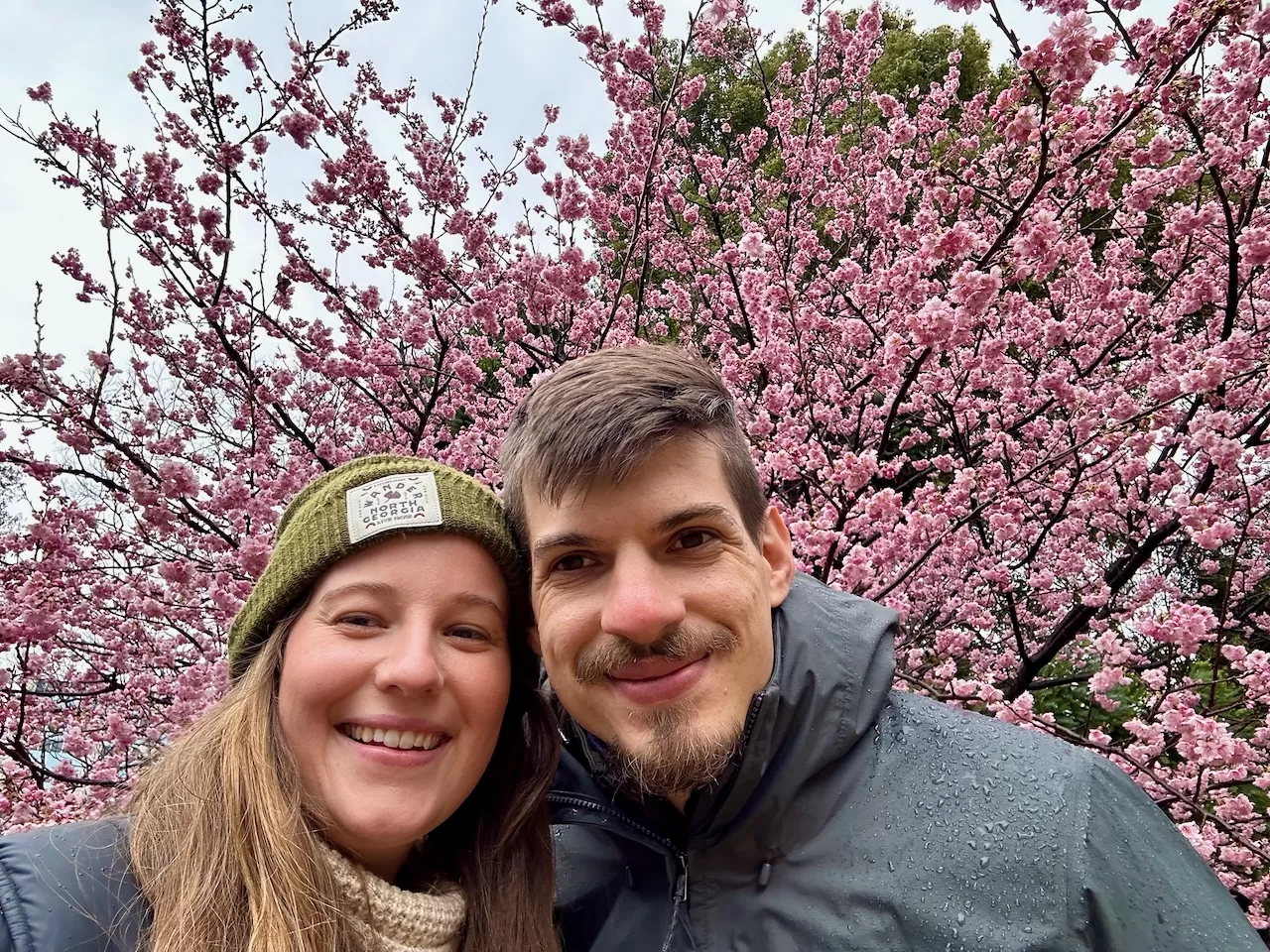
This spring, we had the incredible opportunity to visit Tokyo, and it quickly became my favorite city in the world! Despite being the largest city in the world, Tokyo feels surprisingly peaceful, with its quiet, hidden gems that make you feel as if you’re in a small town rather than a bustling metropolis. Even though there are lots of people everywhere in Tokyo, I have never felt so peaceful moving through a crowd. Everyone is so respectful and kind, which is one of things that I love the most about Japan in general! If planning a trip to Tokyo from the US sounds overwhelming, don’t worry—I’m sharing our exact 4-day Tokyo itinerary to help make your trip seamless and stress-free. Plus, I’ll guide you to the best places to see cherry blossoms (sakura) during spring, along with tips and lessons we learned along the way. Get ready for an unforgettable Tokyo adventure!
General Tips for Your Tokyo Trip:
Use a JR Pass or Suica Card – Both are great for unlimited travel on JR lines or pay-as-you-go transit. More info here – https://www.jrailpass.com/blog/suica-card-vs-jr-pass
Basic Japanese Phrases – Even a simple “Arigato” (thank you) or “Sumimasen” (excuse me) can go a long way. Japanese people are some of the kindest people I’ve ever met, and so respectful, so make sure you are respectful of them.
Weather in February – Tokyo’s weather in Spring is typically chilly, so layering is key. There were a few warm sunny days, but there was also a lot of drizzly cold rain, so pack accordingly!
Etiquette – Don’t talk too loud on the metros, and don’t eat while walking. These are common rules in Japan and it’s always good to respect the culture of the country you’re visiting!
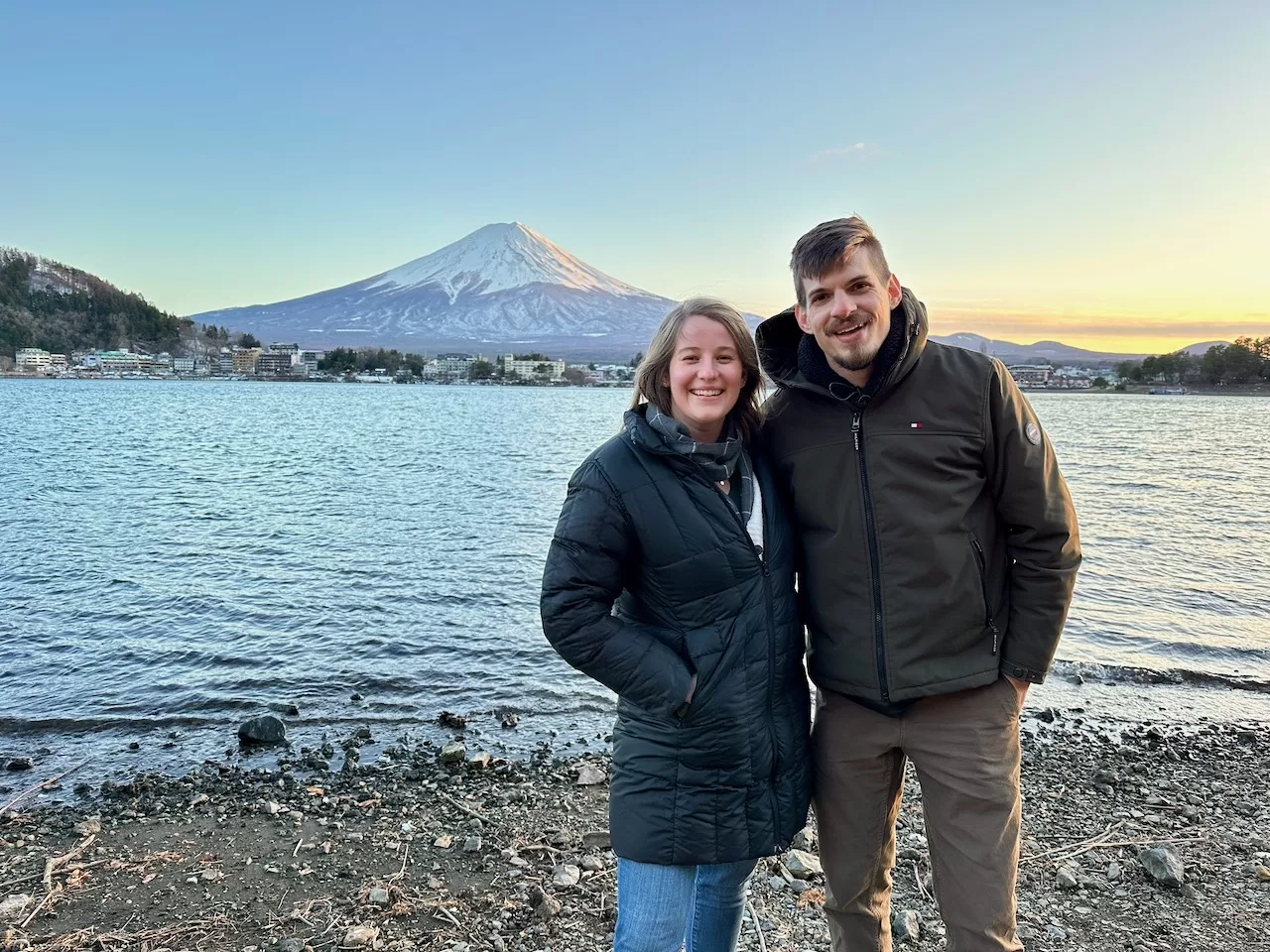
Travel Smarter with My Must Have Essentials!
Planning your next adventure? Check out our curated Amazon Storefront filled with budget-friendly travel gear, RV must-haves, and family travel essentials. From packing hacks to on-the-road comforts, we’ve got everything you need to make your trip stress-free and unforgettable.
Where to stay in Tokyo for Every Budget
You really can’t go wrong when choosing a place to stay in Tokyo. All the neighborhoods are great for different reasons, so it’s really important to figure out what matters to you. Do you like nightlife? Or do you want a quieter atmosphere? I have a recommendation for everyone on the list below! If you’re interested in a specific hotel, click the name of the hotel to be redirected to the hotel on Expedia!
1. Shinjuku
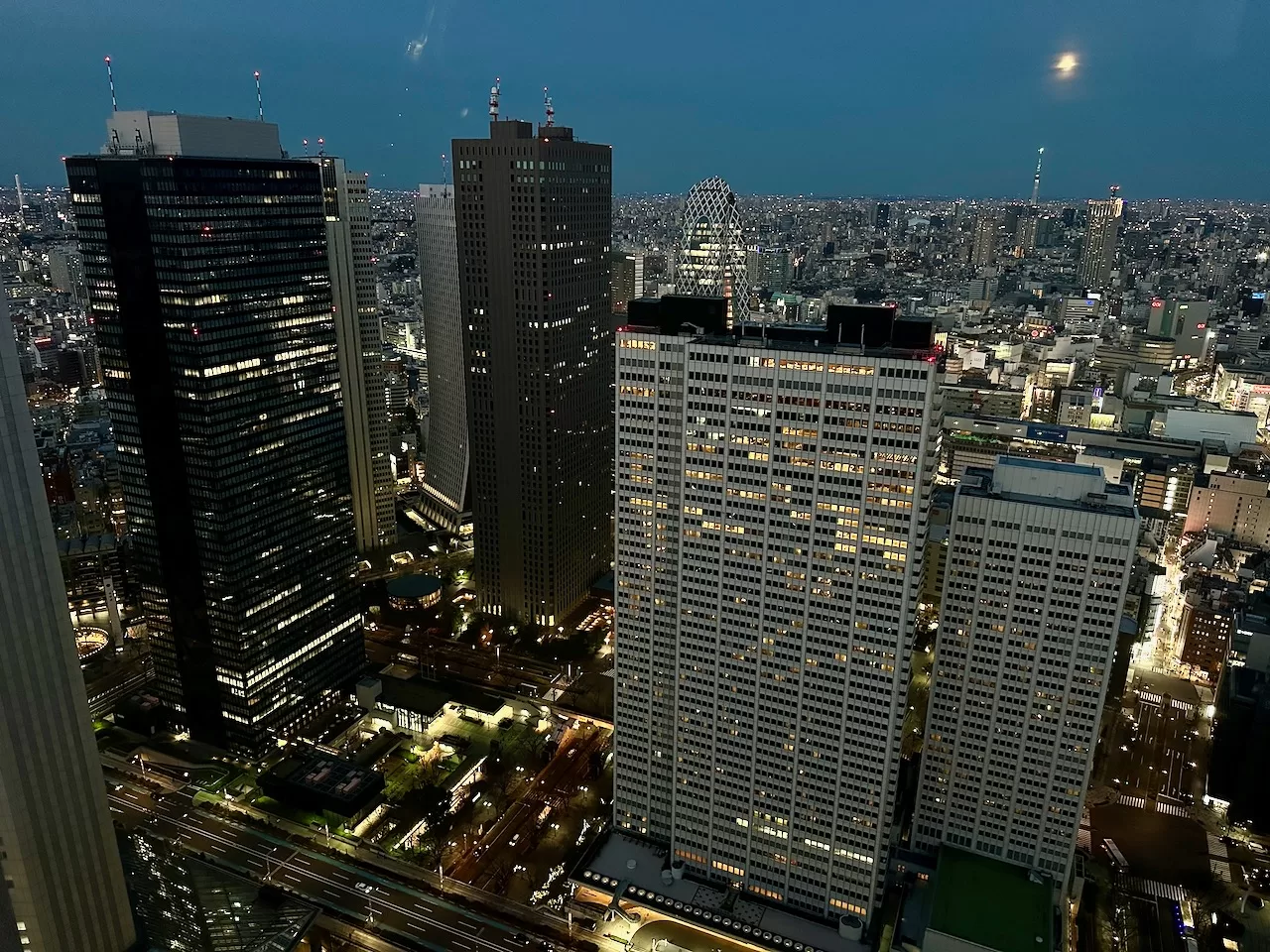
About: A bustling hub known for its neon lights, shopping, dining, and entertainment. Shinjuku is home to one of the busiest train stations in the world and offers a mix of skyscrapers and traditional streets.
Proximity to Attractions:
- Omoide Yokocho: Iconic narrow alleys with tiny restaurants.
- Shinjuku Gyoen National Garden: A peaceful escape from the urban rush.
- Tokyo Metropolitan Government Building: Free observation decks with views of Mt. Fuji on clear days.
Where to Stay:
- Luxury – Keio Plaza Hotel Tokyo Premier Grand – beautiful, modern luxury hotel with all the amenities you could ever need!
- Budget: Hotel & Co Sagami – Affordable and unique capsule accommodations in the heart of Shinjuku.
2. Shibuya
About: Famous for the bustling Shibuya Crossing, this youthful neighborhood is a hotspot for shopping, trendy dining, and nightlife.
Proximity to Attractions:
- Shibuya Crossing: One of the world’s busiest pedestrian intersections.
- Hachiko Statue: Iconic meeting spot and homage to the loyal Akita dog.
- Shibuya Sky: A stunning rooftop observation deck.
Where to Stay:
- Luxury: Cerulean Tower Tokyu Hotel – Modern amenities with gorgeous views of the Tokyo skyline.
- Budget: Wise Owl Hostels Shibuya – Social and budget-friendly, close to major attractions.
3. Ginza
About: Tokyo’s upscale shopping and dining district, known for luxury boutiques, Michelin-starred restaurants, and chic cafes.
Proximity to Attractions:
- Kabuki-za Theatre: Traditional kabuki performances.
- Nihonbashi: Historical district with quaint streets and traditional shops.
- Tsukiji Outer Market: A haven for fresh seafood and street food.
Where to Stay:
- Luxury: The Peninsula Tokyo – Five-star elegance with views of the Imperial Palace Gardens.
- Budget: Hotel Gracery Ginza – Affordable rooms in the heart of Ginza.
4. Asakusa
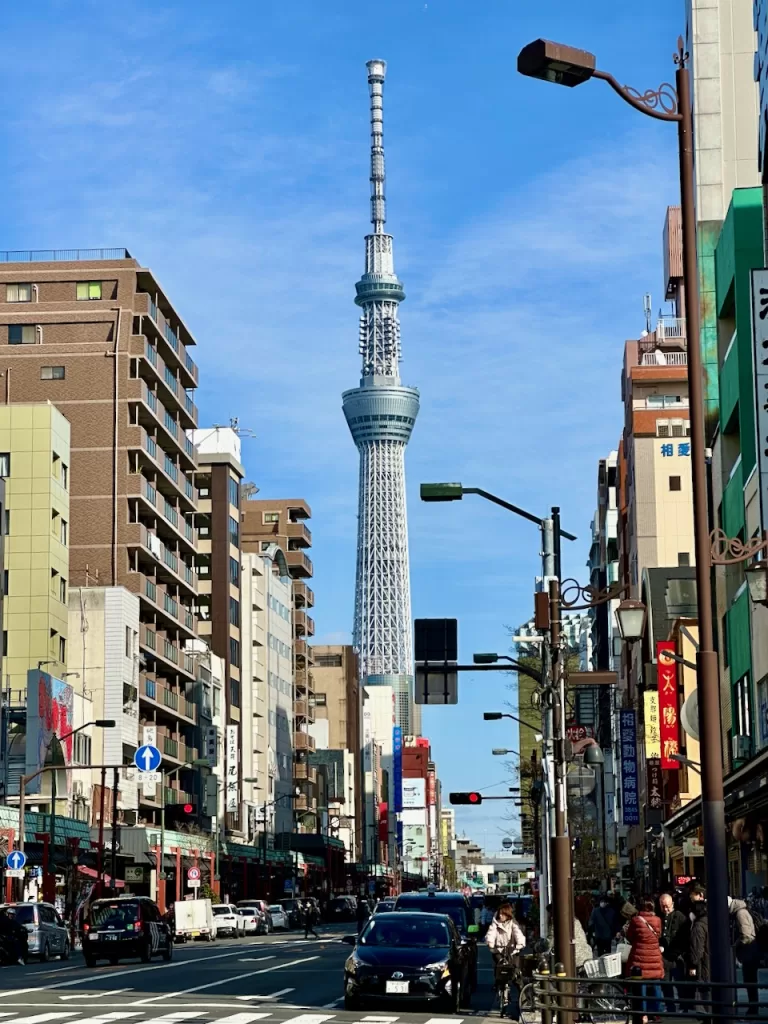
About: A quiet, historic area offering a glimpse into traditional Tokyo, centered around the famous Senso-ji Temple. This is where we stayed when we visited Tokyo, and we loved it! It was well located, lots of history around, and affordable!
Proximity to Attractions:
- Senso-ji Temple: Tokyo’s oldest temple.
- Nakamise Street: Bustling with souvenir shops and traditional snacks.
- Sumida River: Perfect for boat cruises with views of the Tokyo Skytree.
Where to Stay:
- Luxury: Asakusa View Hotel – Stunning views of Tokyo Skytree and close proximity to Senso-ji.
- Budget: Agora Place Tokyo Asakusa – Where we stayed! Small rooms, but a comfortable bed and bathroom with a view of Tokyo Skytree from our window!
5. Akihabara
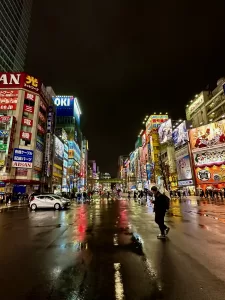
About: Known as “Electric Town,” Akihabara is the go-to spot for electronics, anime, and gaming culture enthusiasts.
Proximity to Attractions:
- Maid Cafes: Unique themed dining experiences.
- Akihabara’s Arcade Stores: Explore famous spots like SEGA Akihabara and Taito Station.
- Kanda Myojin Shrine: Popular among tech workers and anime fans.
Where to Stay:
- Luxury: JR East Hotel Mets Premier Akihabara – A very affordable luxury hotel in a great location!
- Budget: Via Inn Akihabara – A very nice hotel with helpful staff and clean rooms.
6. Roppongi
About: A vibrant nightlife hub with upscale dining, bars, and cultural landmarks. Popular with expats and locals alike.
Proximity to Attractions:
- Roppongi Hills: Home to Mori Art Museum and an observation deck.
- Tokyo Tower: A short walk away.
- National Art Center Tokyo: Unique exhibits in a stunning modern building.
Where to Stay:
- Luxury: Grand Hyatt Tokyo – A high-end option with world-class amenities in Roppongi Hills.
- Budget: APA Hotel Roppongi Six – Affordable, clean, and centrally located.
7. Harajuku
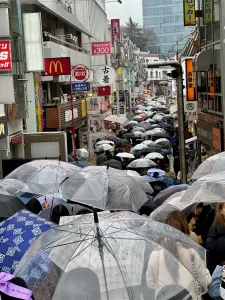
About: Tokyo’s fashion-forward district, famous for its youthful energy and quirky street style.
Proximity to Attractions:
- Takeshita Street: A hub of trendy shops and colorful snacks.
- Meiji Shrine: A serene Shinto shrine surrounded by lush greenery.
- Omotesando: Tokyo’s “Champs-Élysées,” with upscale shopping and architecture.
Where to Stay:
- Luxury: The Aoyama Grand Hotel – luxury hotel with a stunning rooftop bar and pool!
- Harajuku is a more expensive neighborhood, so I wasn’t able to find a good budget option for this one.
8. Ueno
About: A cultural haven with museums, parks, and historical charm.
Proximity to Attractions:
- Ueno Park: Beautiful cherry blossoms in spring and home to Ueno Zoo.
- Tokyo National Museum: A must-visit for Japanese art and history.
- Ameya-Yokocho Market: Vibrant street market with food stalls and bargains.
Where to Stay:
- Luxury: Nohga Hotel Ueno Tokyo – Elegant hotel near the station and park.
- Budget: APA Hotel Ueno Ekiminami– Affordable and conveniently located.
9. Odaiba
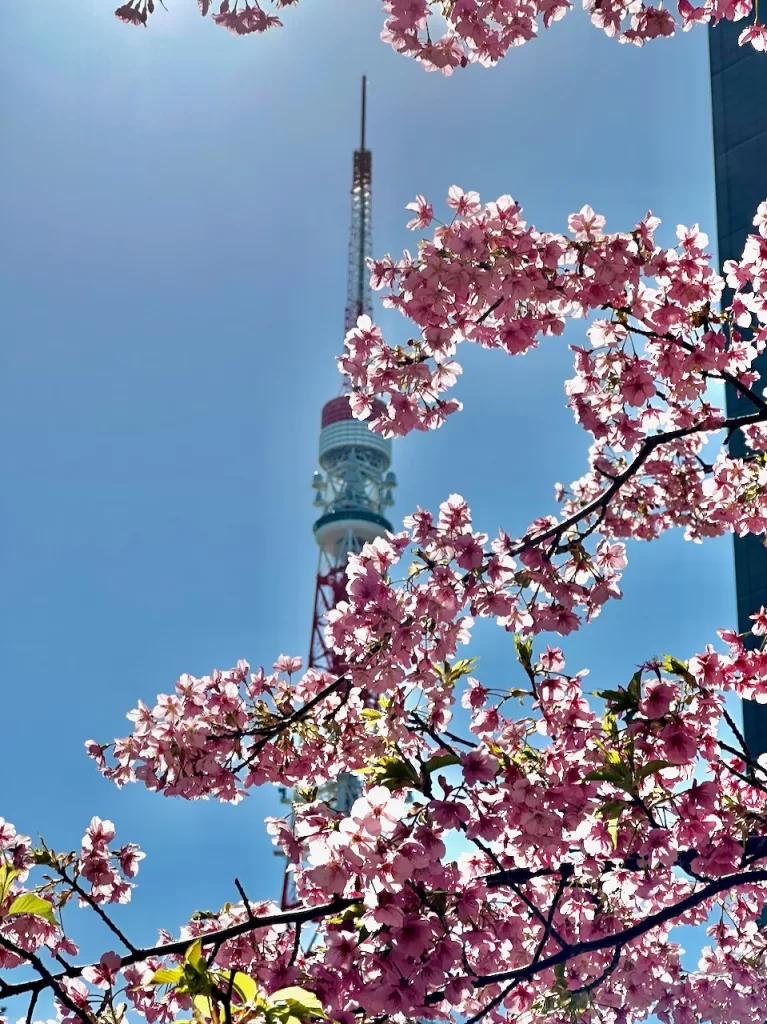
About: A futuristic man-made island with entertainment, shopping, and waterfront attractions.
Proximity to Attractions:
- TeamLab Borderless Museum: Immersive digital art experience.
- DiverCity Tokyo Plaza: Featuring the life-size Gundam statue.
- Odaiba Beach: Relax with views of Rainbow Bridge and the Tokyo skyline.
Where to Stay:
- Luxury: Hilton Tokyo Odaiba – Waterfront luxury with stunning views of Rainbow Bridge.
- Budget: Tokyo Bay Ariake Washington Hotel – Affordable and near Odaiba’s main attractions.
10. Ikebukuro
About: A lively neighborhood for shopping, entertainment, and food, often overlooked by tourists.
Proximity to Attractions:
- Sunshine City: A massive shopping and entertainment complex.
- Tokyo Metropolitan Theatre: Perfect for catching live performances.
- Animate Ikebukuro: A must-visit for anime and manga enthusiasts.
Where to Stay:
- Luxury: Hotel Metropolitan Tokyo Ikebukuro – Modern, upscale, and conveniently located near the station.
- Budget: Sakura Hotel Ikebukuro – Simple, affordable, and great for international travelers.
If you’re having trouble deciding which neighborhood to stay in, don’t worry, we were, too. After visiting Tokyo ourselves, we realized there is not a bad neighborhood to stay in. The entire country of Japan is so safe, and you really can’t go wrong.
Getting Around Tokyo
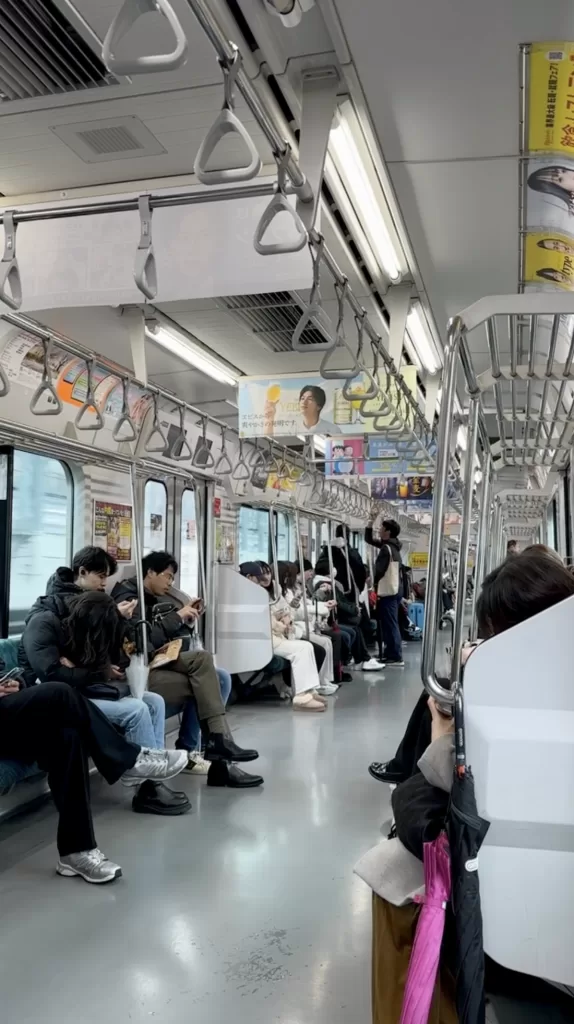
Navigating Tokyo is incredibly efficient and stress-free thanks to its world-class public transportation system, particularly the metro. During my visit earlier this year, I was struck by how respectful everyone is while commuting. Passengers speak in hushed tones or remain silent, keeping the atmosphere calm—even on crowded trains. One of the unique aspects of Tokyo’s metro is the availability of women-only cars during rush hours, offering an added sense of comfort and security. The metro is also easy to navigate, with color-coded lines, English signage, and apps like Google Maps or Japan Transit Planner to help with route planning. I highly recommend getting a Suica or Pasmo card for seamless travel across trains and buses in Tokyo. Whether you’re heading to iconic landmarks like Shibuya Crossing or exploring hidden gems in quieter neighborhoods, Tokyo’s metro system makes getting around a breeze.
Tips for Seeing Cherry Blossoms in Tokyo
1. Best Time of Year for Cherry Blossoms
- Peak Bloom: The best time to see cherry blossoms (sakura) in Tokyo is typically from late March to early April, with full bloom (mankai) usually occurring around the last week of March.
- Blooming Period: The blossoms can last about a week after full bloom, depending on weather conditions. For a quieter experience, aim for the days just before or after peak bloom.
2. When the Blooms Start
- Sakura season in Tokyo generally begins with the first bloom (kaika) around mid to late March. Check bloom forecasts closer to your visit, as they can vary slightly each year based on weather.
3. Top Tips for Enjoying Cherry Blossoms
- Visit Early in the Day: Popular spots can get crowded, especially during weekends. Arrive early in the morning to enjoy serene views and better photography opportunities.
- Plan for a Picnic (Hanami): Bring snacks or a bento box and join the locals for a hanami picnic under the blossoms. Parks like Ueno Park and Shinjuku Gyoen have dedicated areas for this.
- Explore Evening Illuminations: Many places, like Chidorigafuchi and Sumida Park, light up the cherry blossoms at night for a magical viewing experience.
- Check Bloom Updates: Use websites or apps that provide daily bloom updates to ensure you catch the best views.
4. Best Spots to See Cherry Blossoms in Tokyo
- Ueno Park: One of Tokyo’s most famous spots, with over 1,000 cherry trees lining the pathways.
- Shinjuku Gyoen: Offers spacious lawns and multiple varieties of cherry trees that bloom at different times, extending the viewing season.
- Meguro River: Iconic for its cherry blossoms arching over the water, with lanterns creating a romantic evening glow.
- Chidorigafuchi: A scenic moat near the Imperial Palace, perfect for renting a boat to view blossoms from the water.
- Yoyogi Park: A less crowded option with large open spaces for relaxing under the trees.
5. Avoid Crowds with Lesser-Known Spots
- Koishikawa Korakuen Garden: A traditional Japanese garden with stunning sakura views.
- Koganei Park: Known for its spacious grounds and variety of cherry trees.
- Sumida Park: Offers views of cherry blossoms with Tokyo Skytree in the background.
6. Prepare for the Weather
- Early spring in Tokyo can be chilly in the mornings and evenings, so dress in layers and bring a light jacket. Rain is also common, so pack an umbrella for unexpected showers.
7. Be Respectful of Local Customs
- Avoid climbing or shaking cherry trees for photos. Follow designated paths and leave no trash behind if you’re enjoying a hanami picnic.
With these tips, you’ll have a magical experience viewing cherry blossoms in Tokyo!

Travel Smarter with My Must Have Essentials!
Planning your next adventure? Check out our curated Amazon Storefront filled with budget-friendly travel gear, RV must-haves, and family travel essentials. From packing hacks to on-the-road comforts, we’ve got everything you need to make your trip stress-free and unforgettable.
Day 1 – Exploring Tokyo’s Neighborhoods, and Cherry Blossom Sights
Morning: Cherry Blossom Viewing Spot #1: Ueno Park
Ueno Park – Starting off this itinerary with a bang! One of Tokyo’s most famous spots for cherry blossoms, Ueno Park typically starts showing blooms in late February. Take a peaceful stroll through the park’s expansive grounds to enjoy early blooming varieties. With over 1,000 cherry trees, it’s especially magical during sakura season.
Lunch
I would recommend stopping into one of Japan’s “konbini” or convenience stores to try out different foods. There’s seriously one on every corner and everything is fresh made daily! I would recommend trying different kinds of Onigiri, my personal favorite thing to get from konbini.
Afternoon: Asakusa Neighborhood
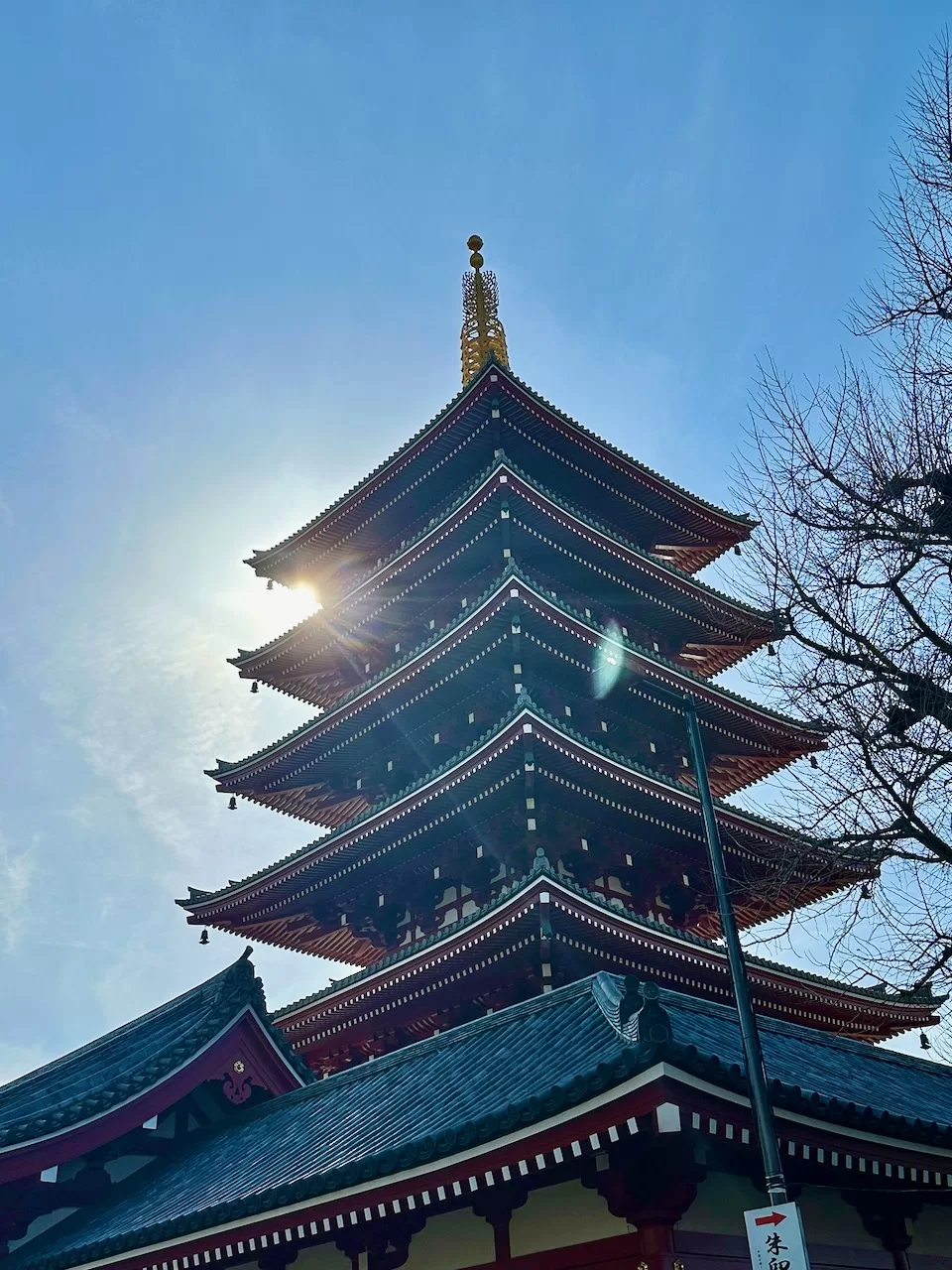
Explore Senso-ji Temple – Tokyo’s oldest temple, surrounded by picturesque architecture and history, is even more stunning with early cherry blossoms in bloom nearby.
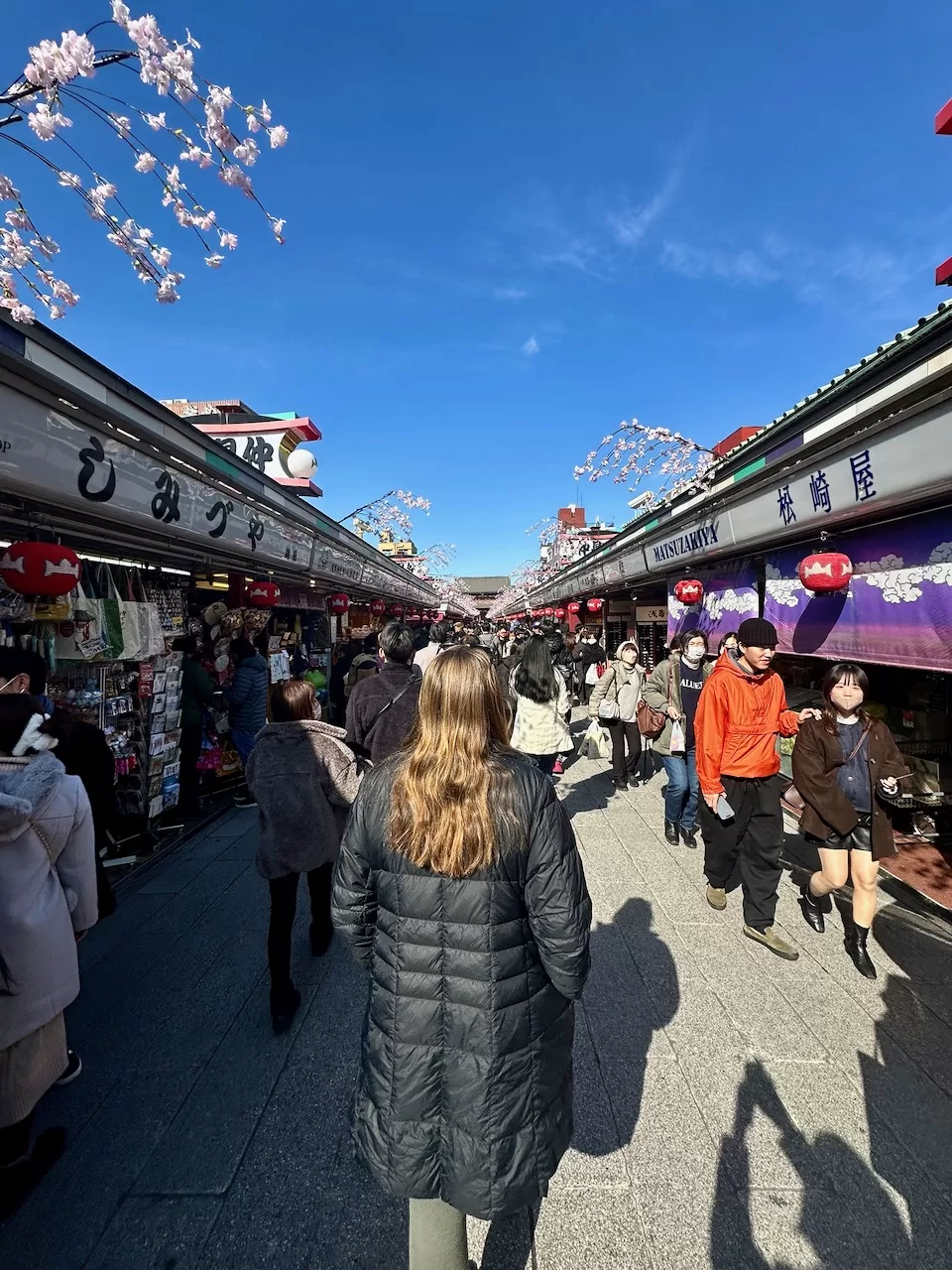
Nakamise Dori Street – Explore this bustling shopping street leading to Senso-ji, where you’ll find traditional souvenirs and local treats.
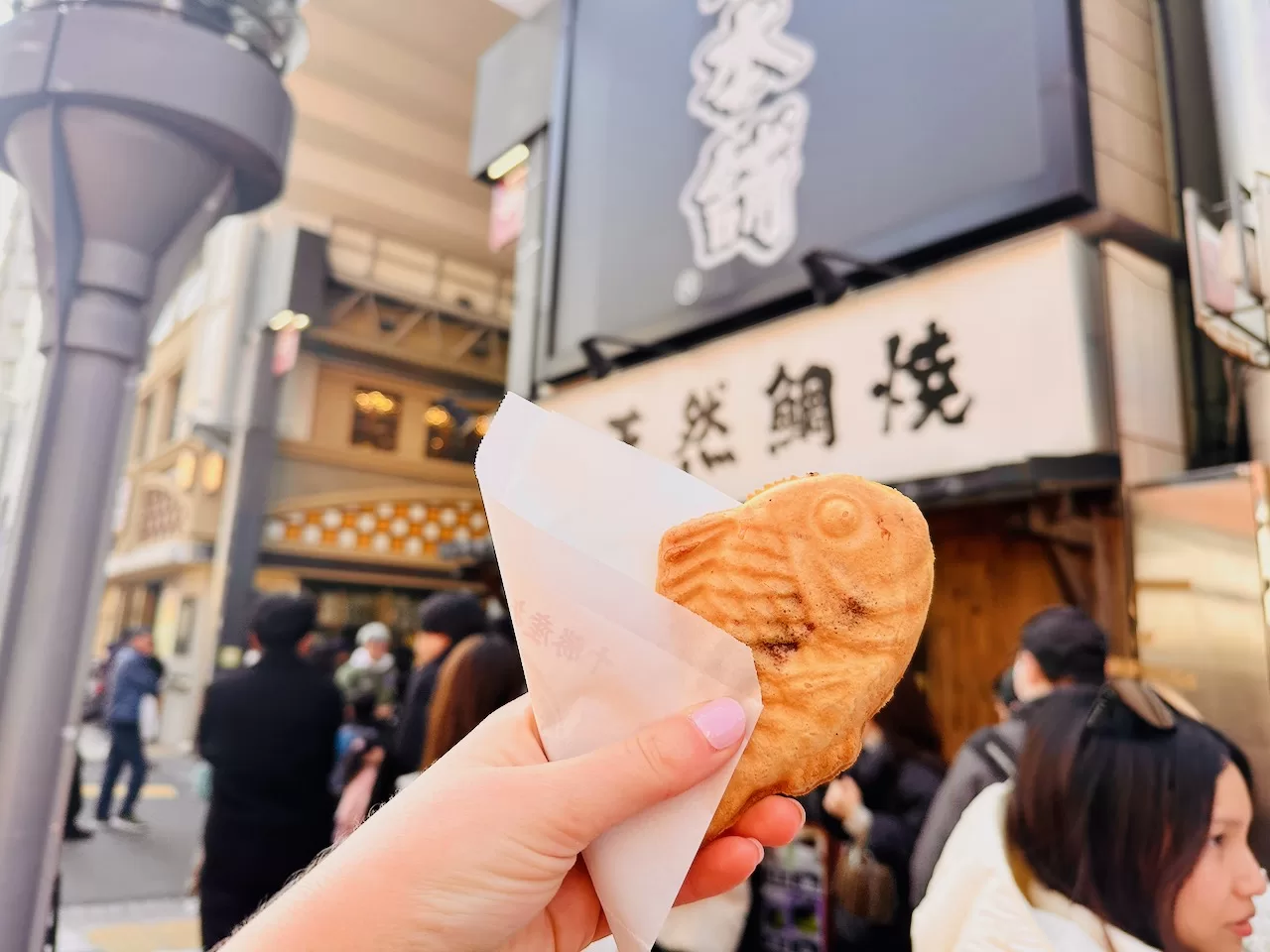
Naruto Taiyaki – Stop for taiyaki, a sweet fish-shaped pastry filled with red bean paste or custard. We got one of each and they were all SO delicious, you can’t go wrong no matter which you choose.
Evening – Akihabara Neighborhood
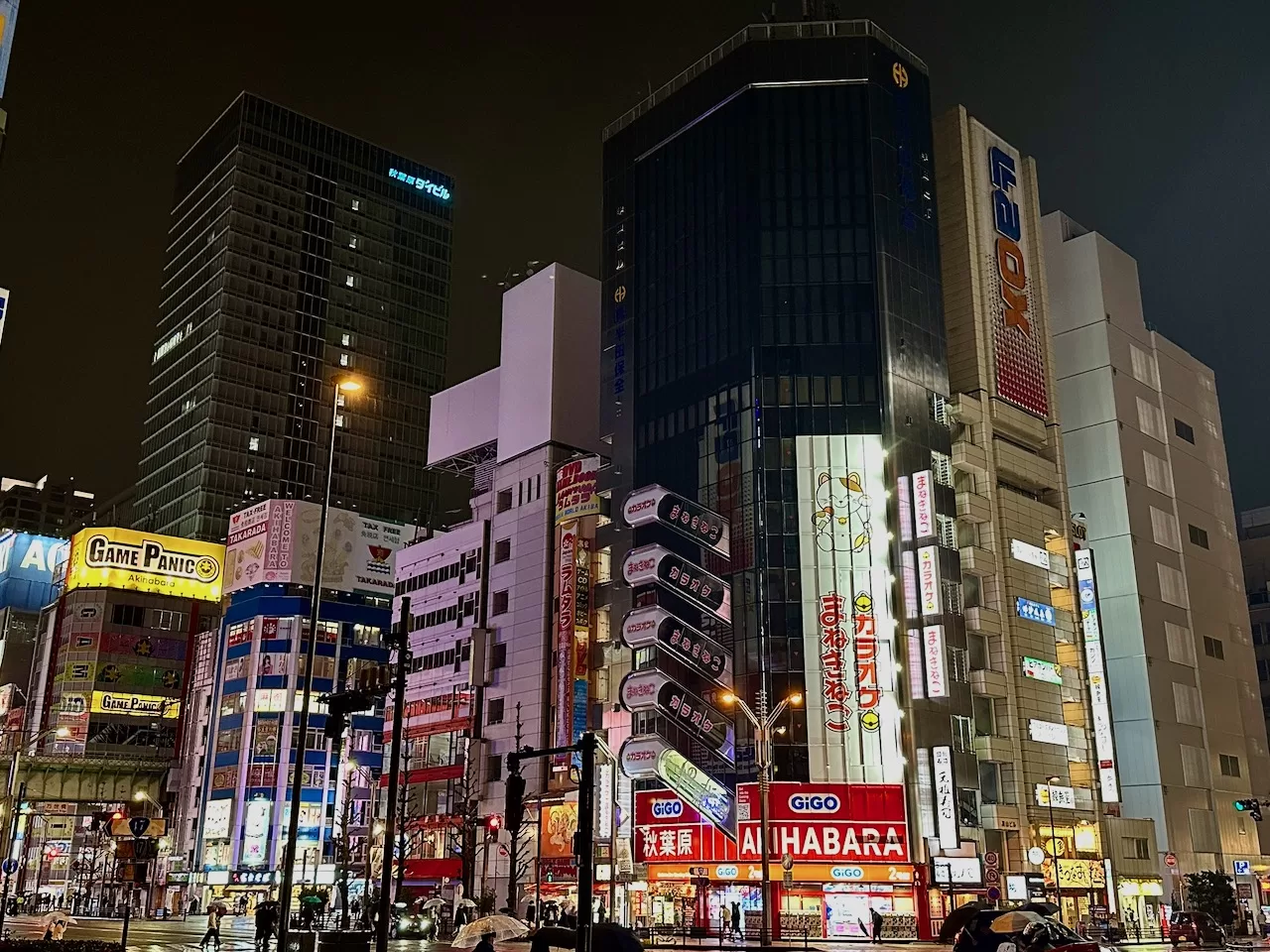
Akihabara “Electric Town– A vibrant area famous for neon lights, tech shops, and arcades. At night, it lights up beautifully, creating a true Tokyo experience. Wander through the many levels of arcade games in Taito Station Ahkihabara or SEGA Ahkihabara Arcade and maybe even try a few!
Dinner
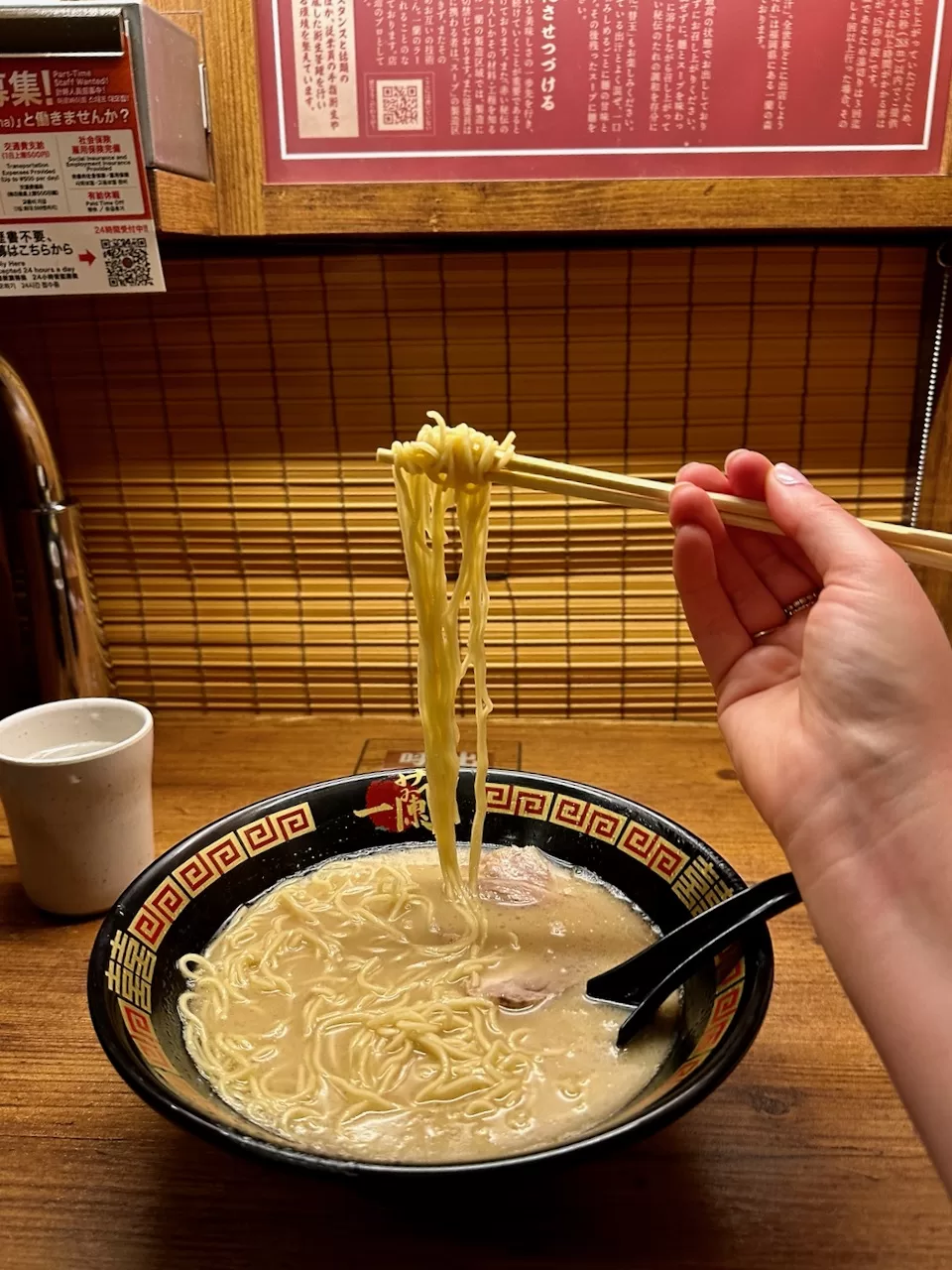
Ichiran Ramen – For a different experience, head to this famous ramen chain where you can enjoy a personal booth and customize your ramen’s flavor, noodle firmness, and spice level. It’s a unique, cozy way to enjoy ramen. There are several locations all over Tokyo, so no matter where you end up, there should be one nearby!
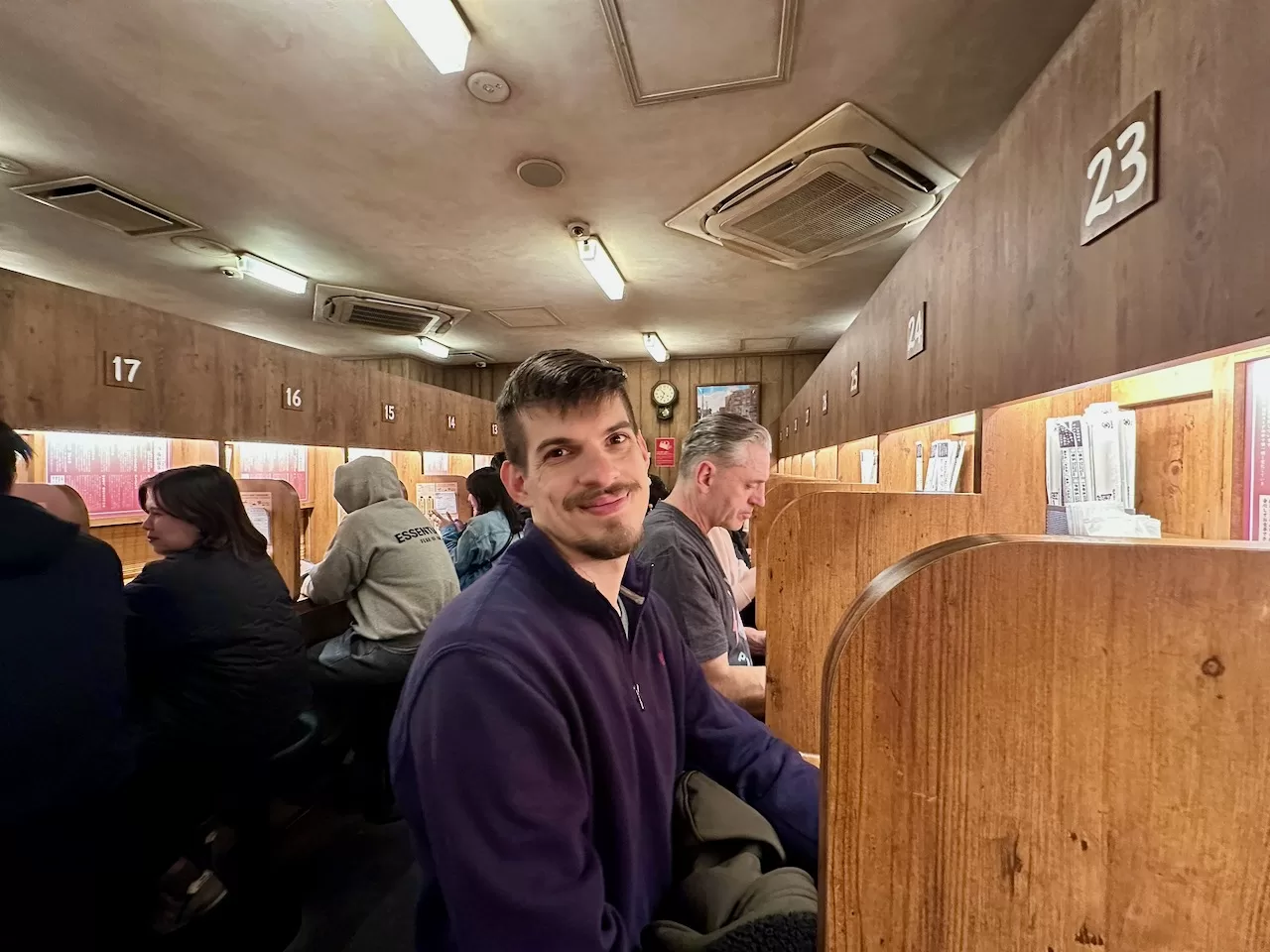
Day 2 – Gardens, Harajuku, and Shinjuku
Morning
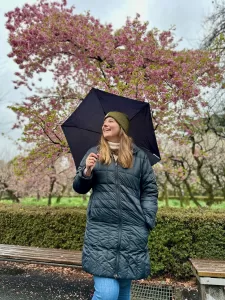
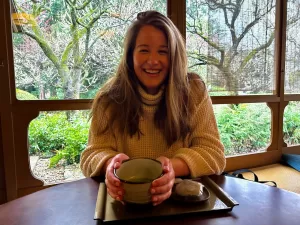
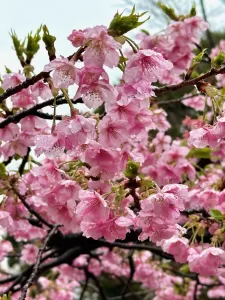
Shinjuku Gyoen National Garden – One of Tokyo’s most beautiful parks, Shinjuku Gyoen combines Japanese, French, and English garden styles. It’s an excellent place to stroll through beautiful landscapes and, in early spring, witness blooming cherry blossoms. The gardens are quiet and scenic, offering a peaceful break from the city. It was rainy on the day we went, so we stopped in one of the traditional tea shops in the garden for a snack and to warm up.
Lunch
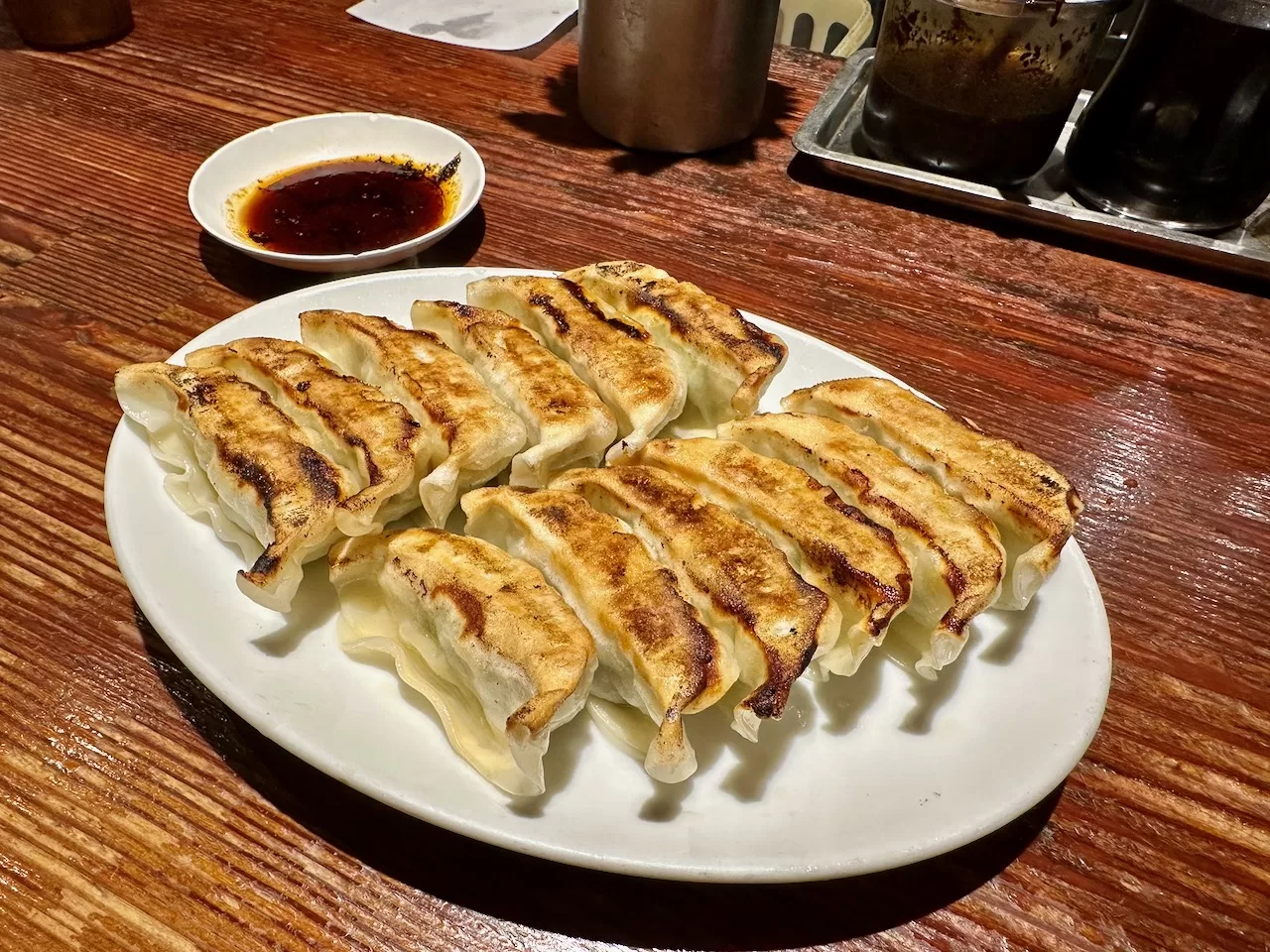
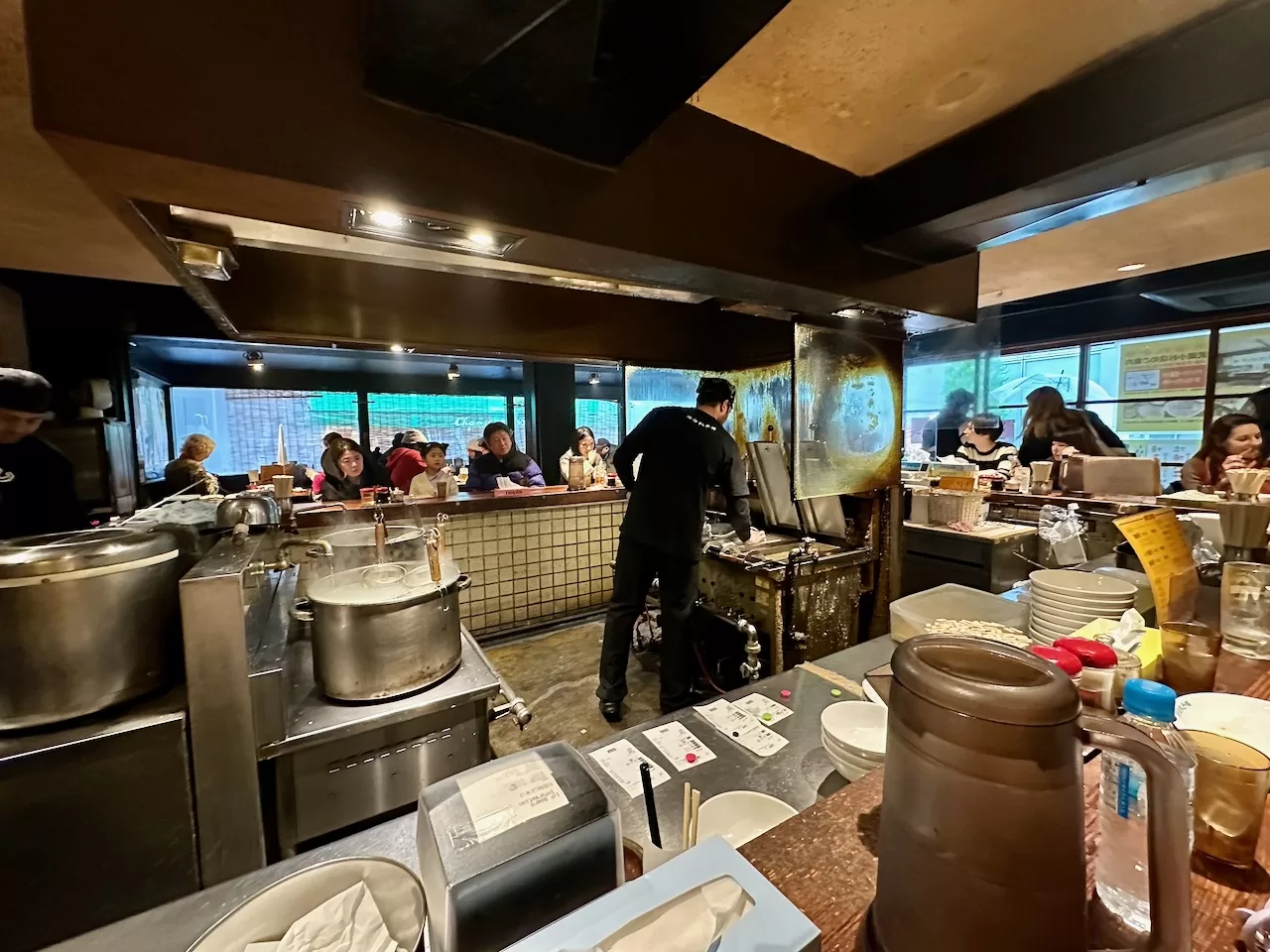
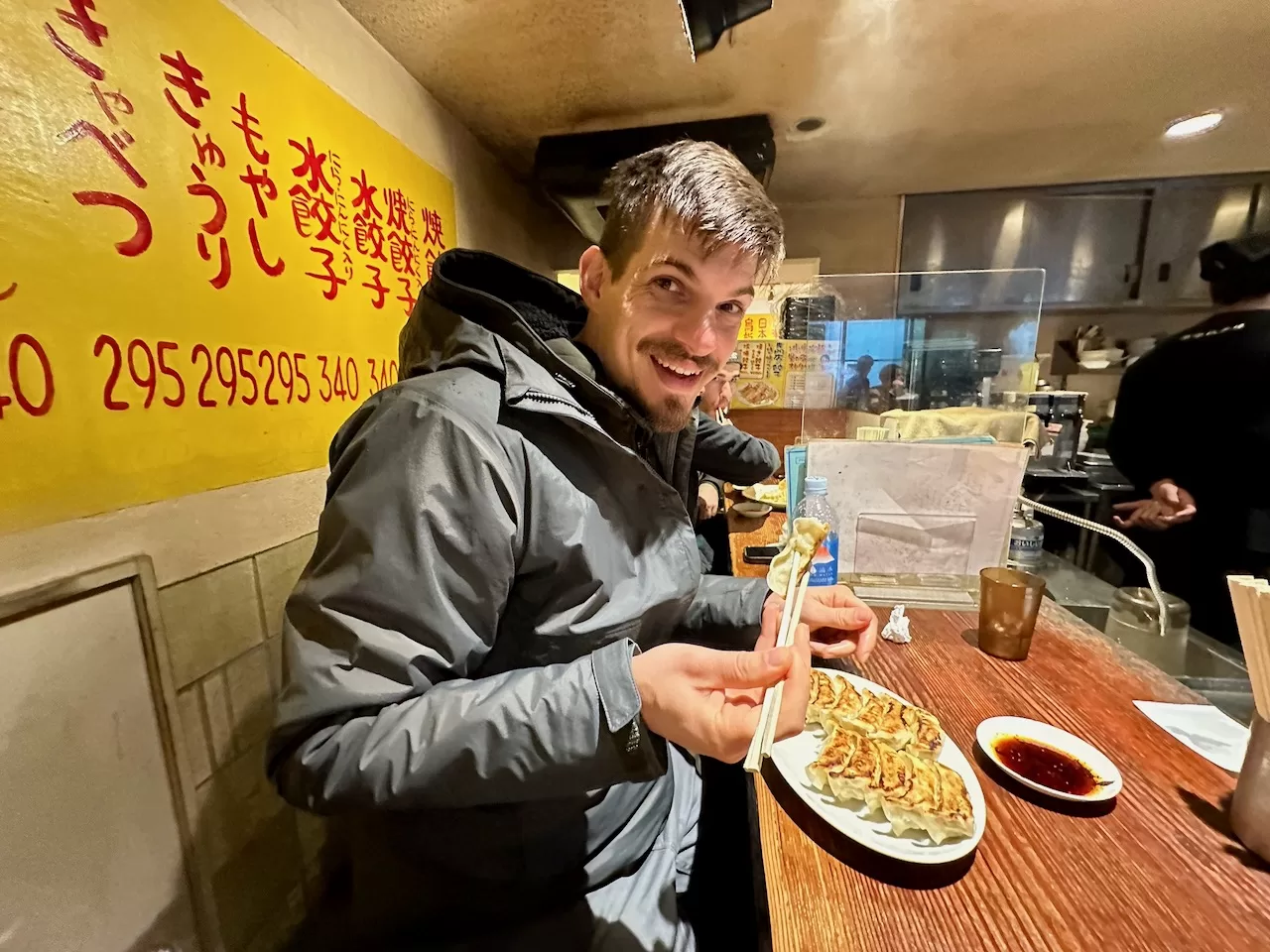
Harajuku Gyozaro – Just a mile away from Shinjuku Gyoen, Harajuku Gyozaro is a favorite among locals and travelers for affordable and delicious gyoza (dumplings). Their menu is simple, focusing on fried and steamed dumplings that are both affordable and tasty. We devoured as many dumplings as we possibly could, they are divine and so cheap!
Afternoon – Harajuku Neighborhood
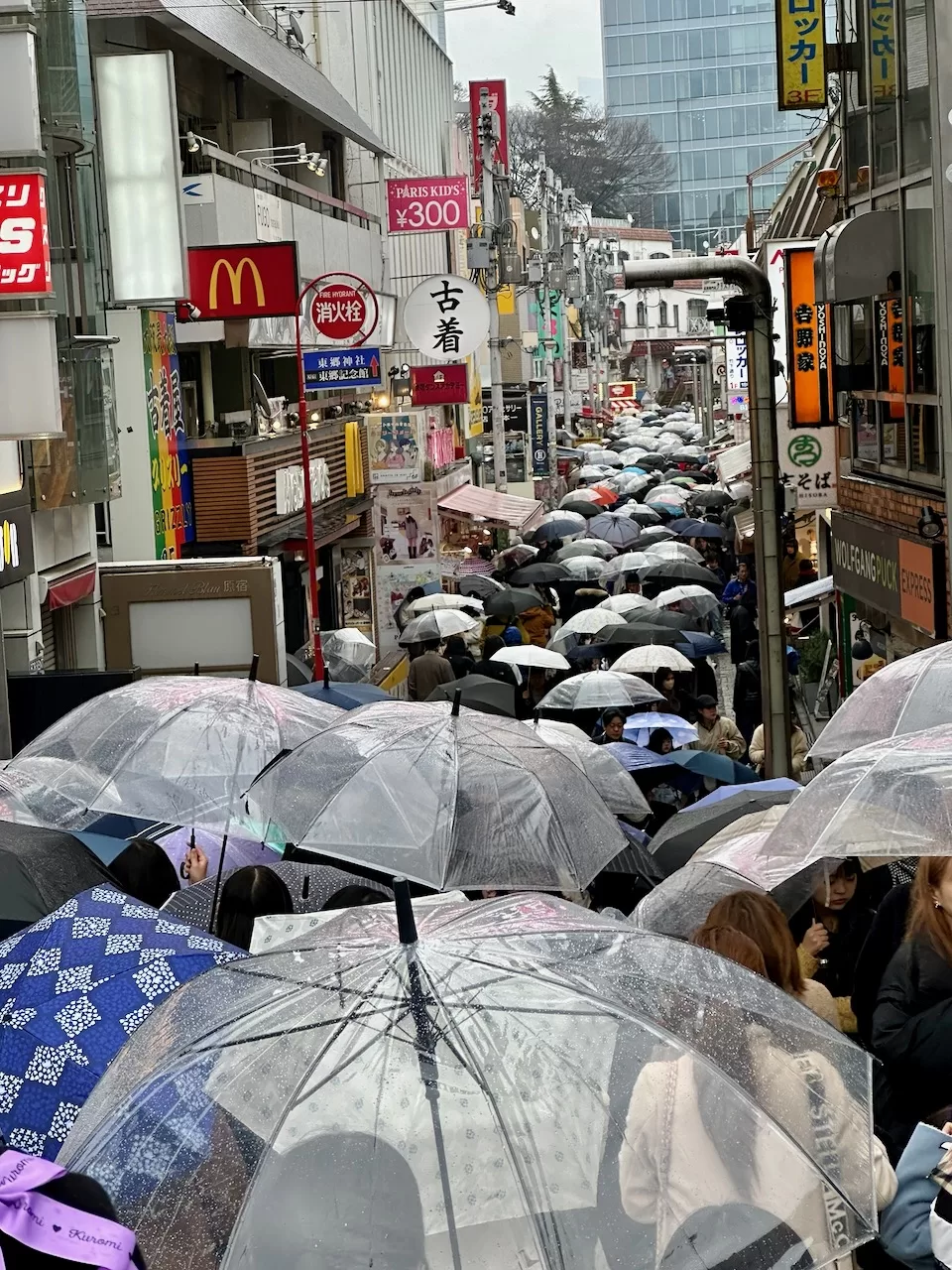
Takeshita Street – This iconic shopping street is packed with quirky shops, colorful fashion, and creative street art. Known for its youth-oriented shops and fashion boutiques, Takeshita Street is a great place for people-watching, unique shopping, and grabbing Instagram-worthy photos.
Marion Crepes – If you’re not stuffed from lunch, you have to try a crepe! A staple of Harajuku, Marion Crepes serves famous Japanese-style crepes filled with everything from whipped cream and strawberries to chocolate brownies. A must-try snack in Harajuku!
Meiji Jingu Shrine – Just a short walk from Takeshita Street, this shrine offers a calming contrast to Harajuku’s energy. Surrounded by a dense forest, Meiji Jingu is dedicated to Emperor Meiji and Empress Shoken and is one of Tokyo’s most important Shinto shrines.
Evening – Sunset Views and Shinjuku
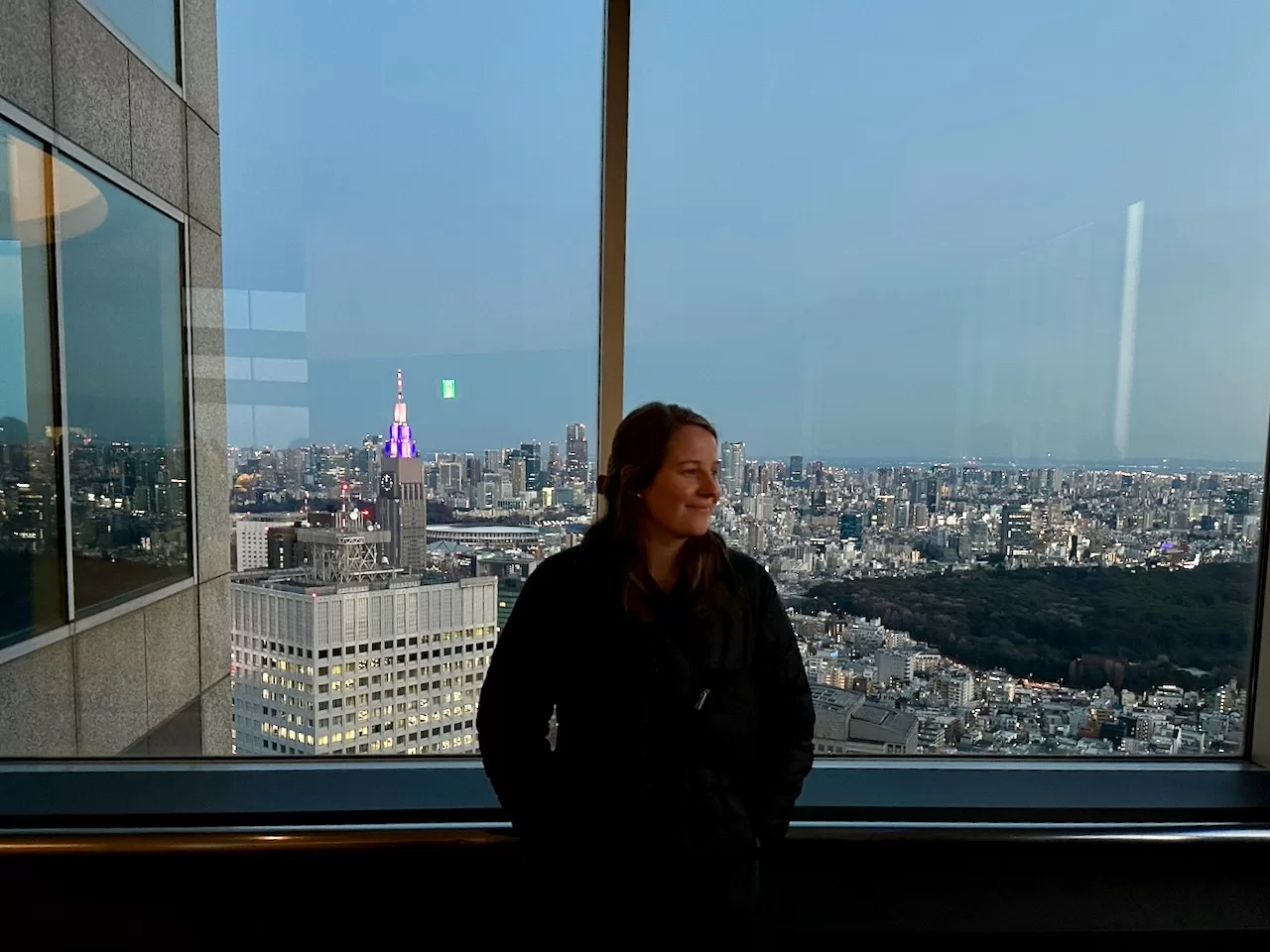
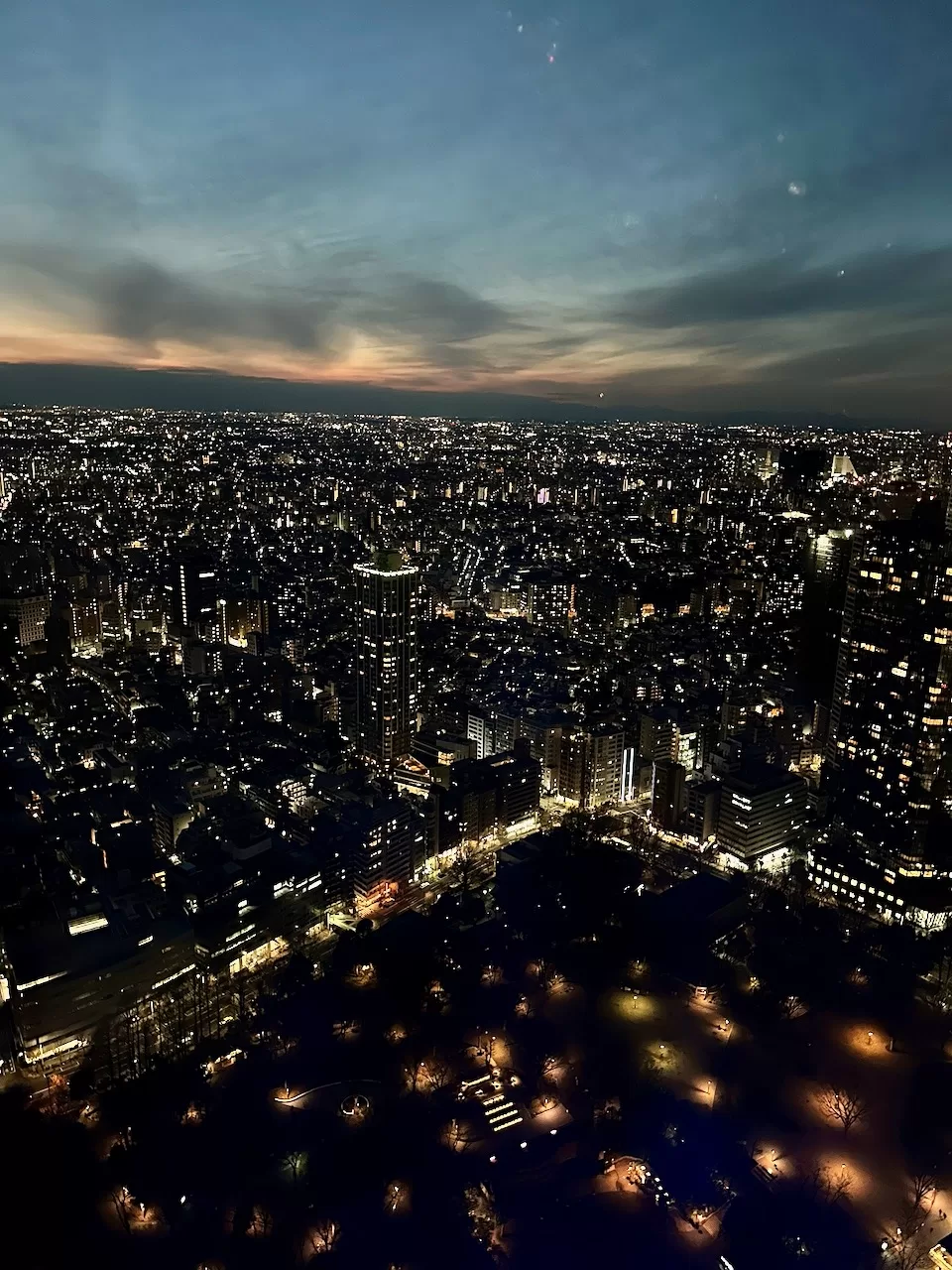
Tokyo Metropolitan Government Building – Known for its free observation decks, this building offers one of the best views of Tokyo, especially at sunset. On clear days, you may even catch a glimpse of Mt. Fuji in the distance like we did! This was for sure the best budget thing we did the entire trip! I couldn’t believe that it was free! We did have to wait in line for about 30 minutes to get up to the top, but once we did, we stayed up until after the sun went down and the lights came on in the city. It was magical!
Dinner
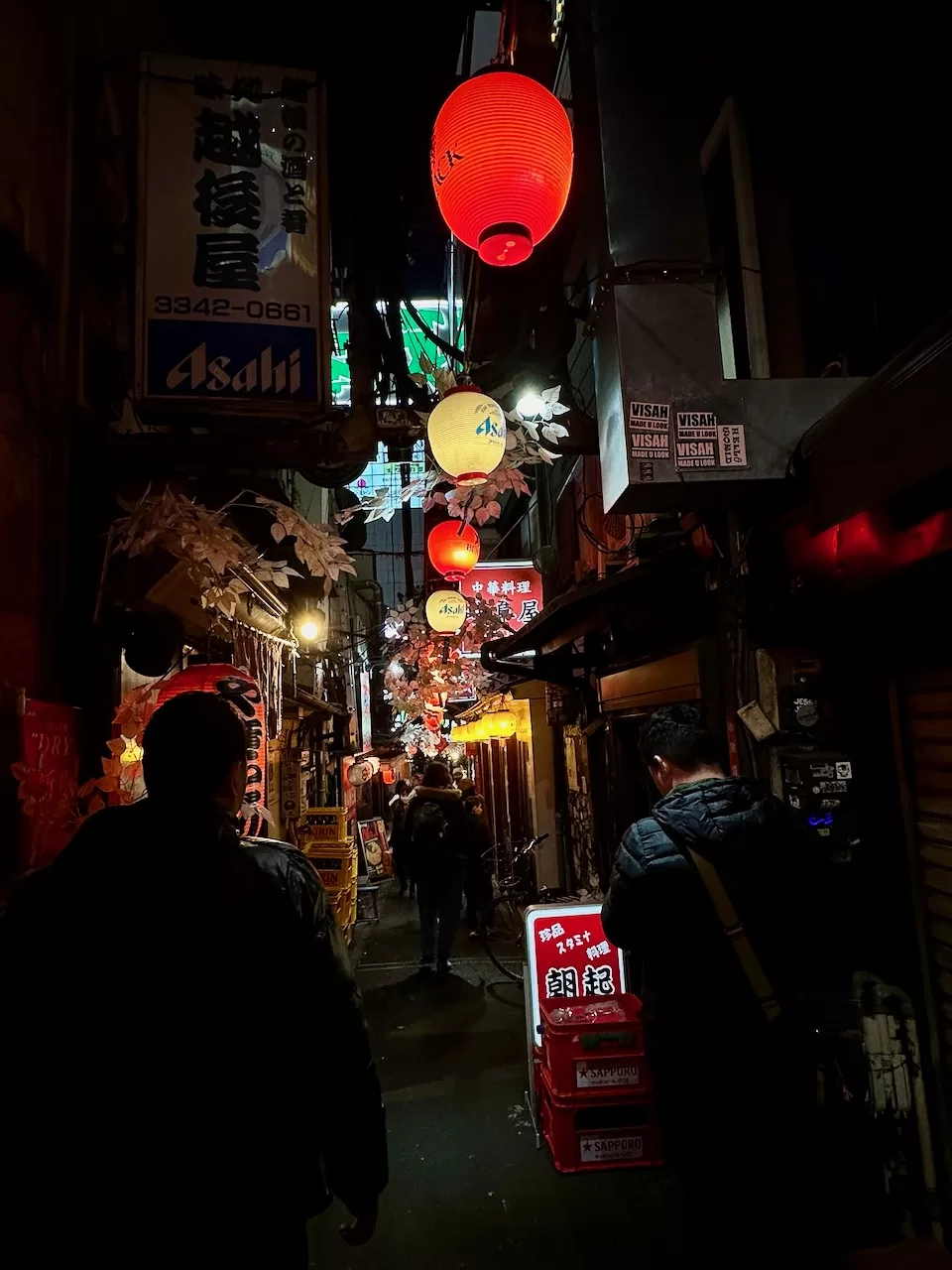

Omoide Yokocho – Also known as “Memory Lane” or “Piss Alley,” this alleyway in Shinjuku is lined with tiny restaurants and izakayas (Japanese pubs). Savor some skewered yakitori or kushiyaki while enjoying the nostalgic, lantern-lit atmosphere. Since it’s a small alley, it can get very crowded and hot, but it’s a cultural experience you don’t want to miss!

Travel Smarter with My Must Have Essentials!
Planning your next adventure? Check out our curated Amazon Storefront filled with budget-friendly travel gear, RV must-haves, and family travel essentials. From packing hacks to on-the-road comforts, we’ve got everything you need to make your trip stress-free and unforgettable.
Day 3 – Markets, Art, and Shibuya
Morning
Tsukiji Outer Market – Known for its fresh seafood, street food stalls, and vibrant atmosphere, this market is perfect for sampling local delicacies. Try some grilled seafood skewers, tamagoyaki (Japanese omelet), or freshly caught sashimi. The market is open from 8 AM to 2 PM, with some shops opening earlier.
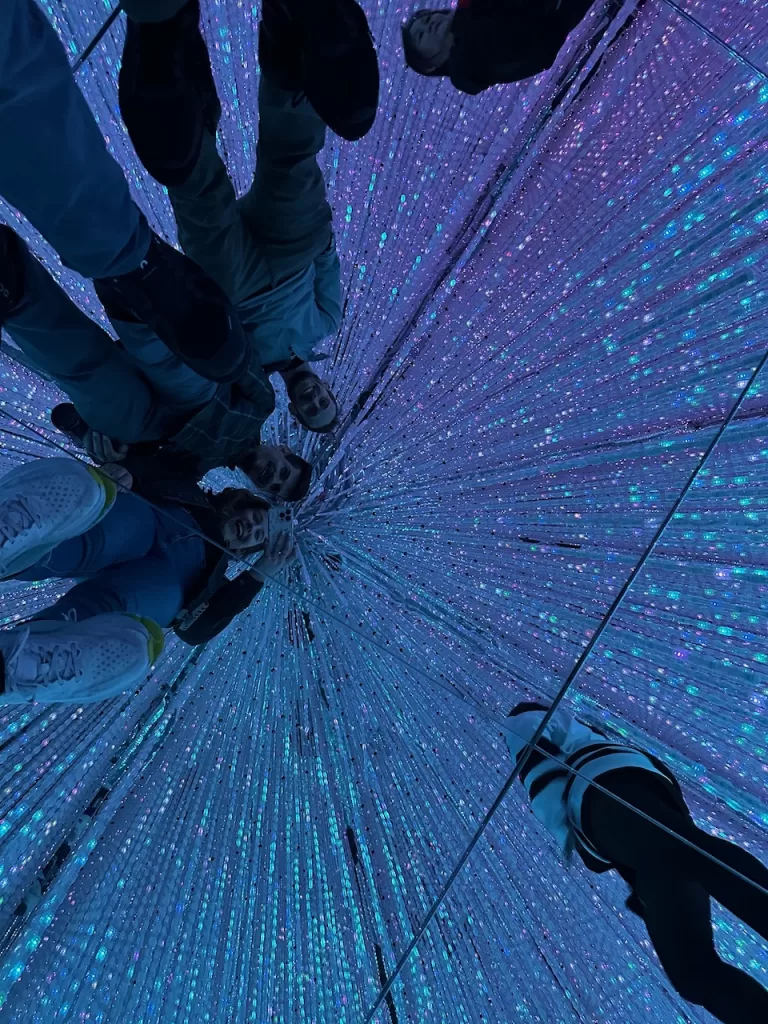
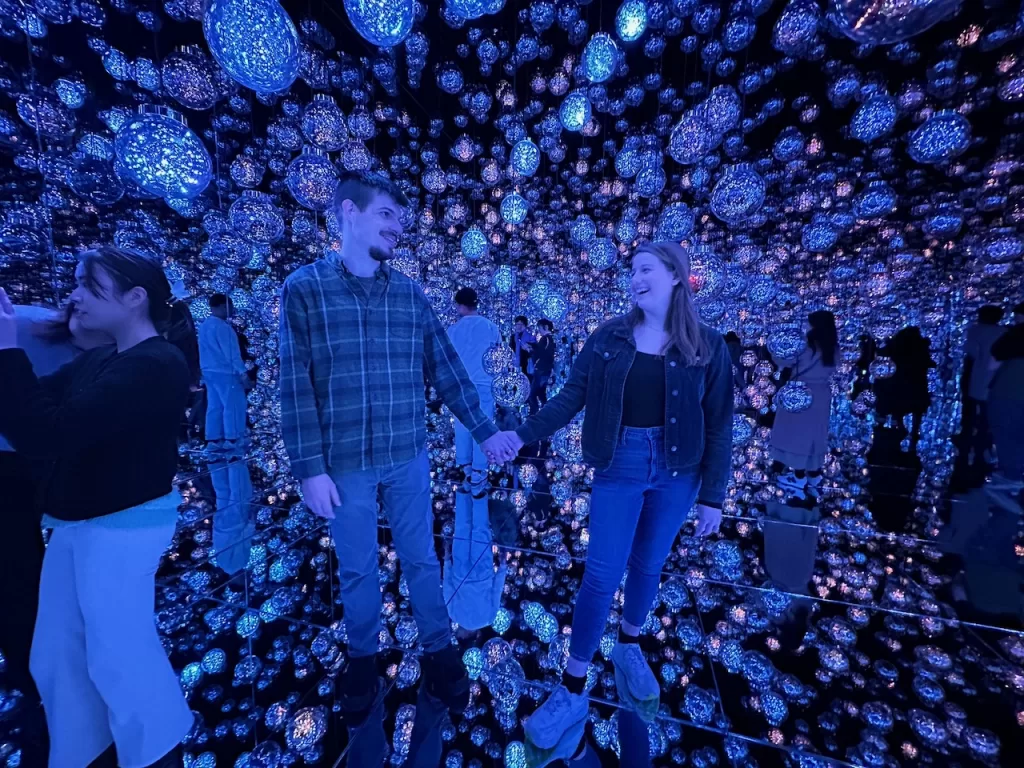
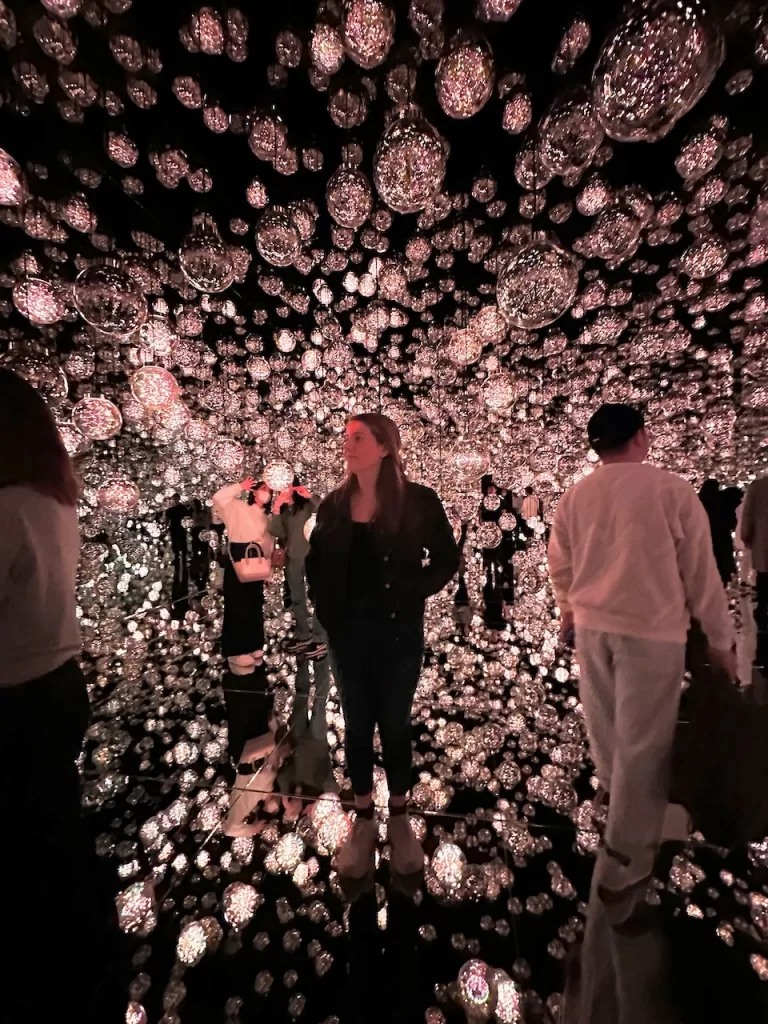
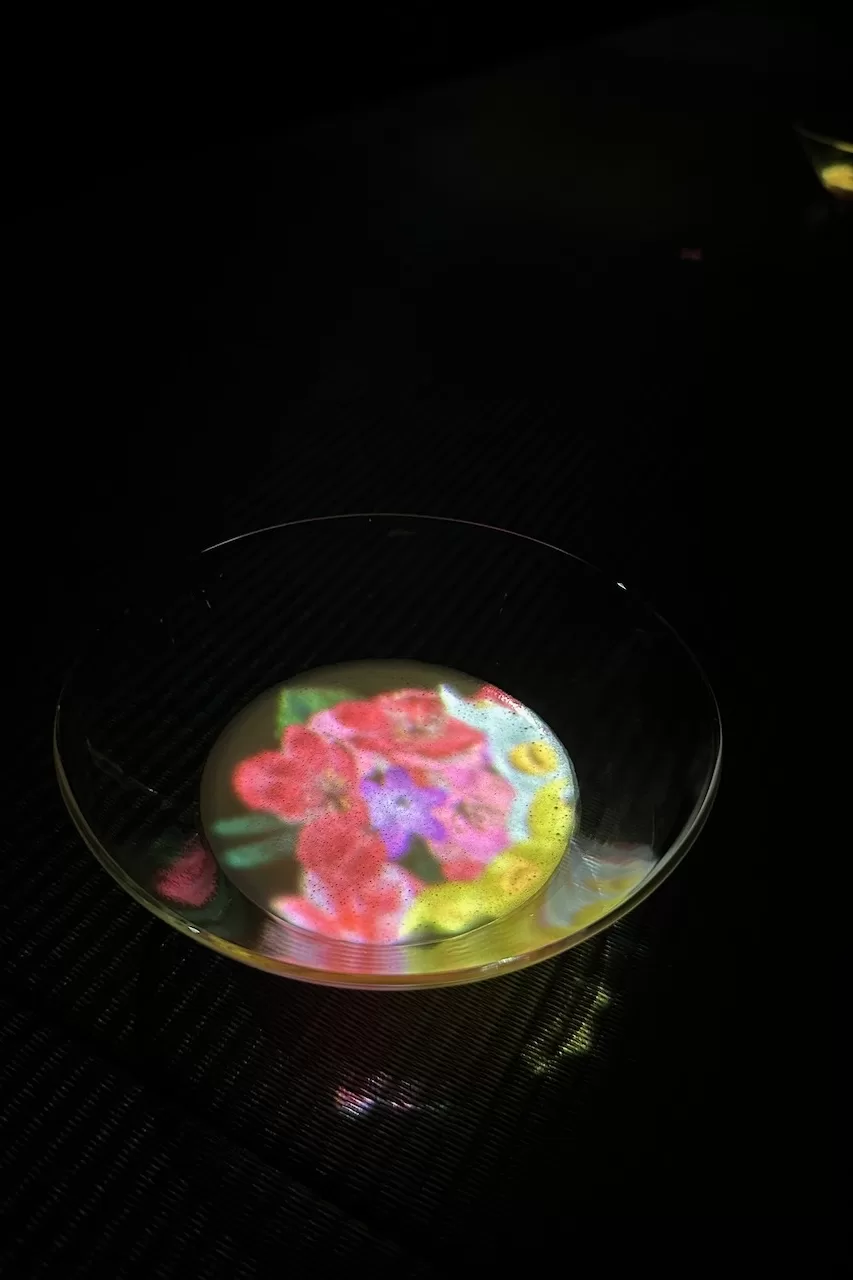
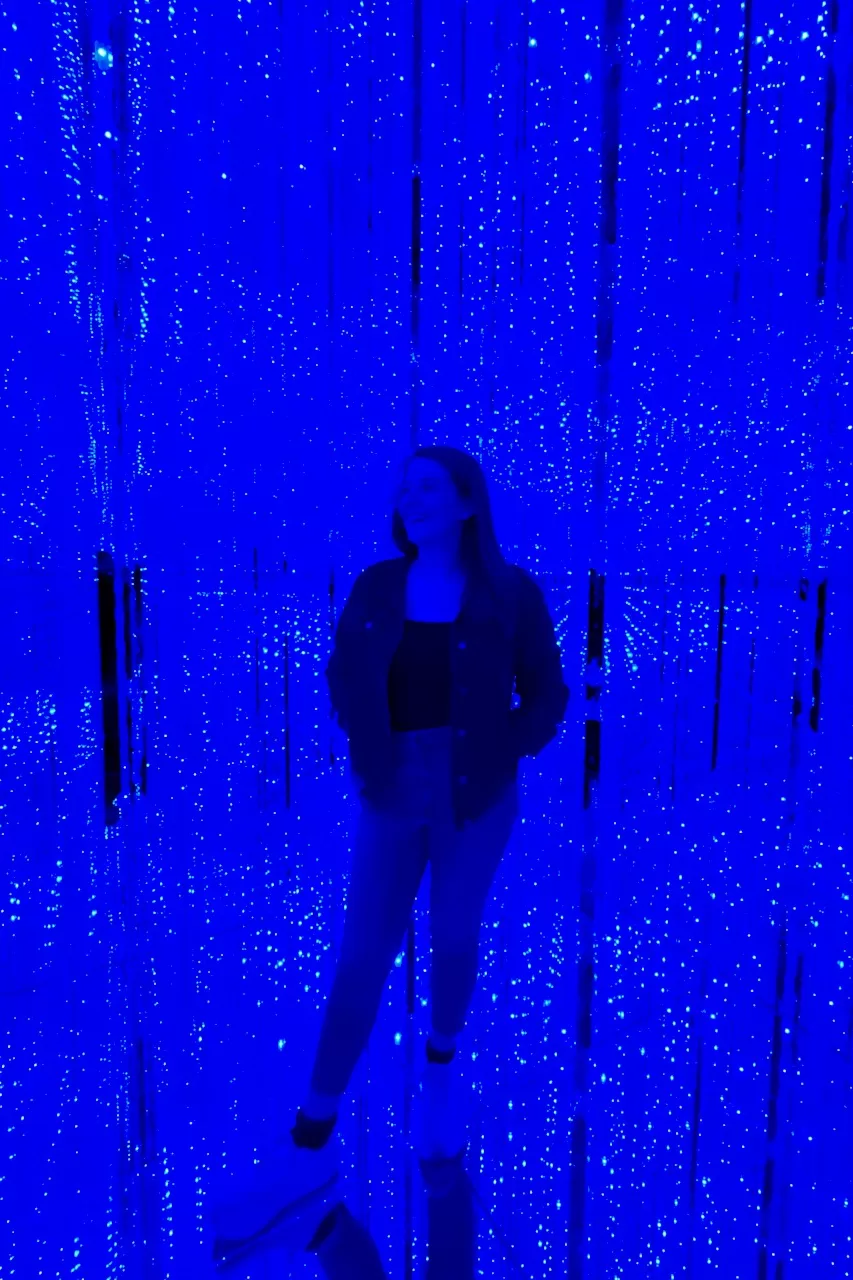
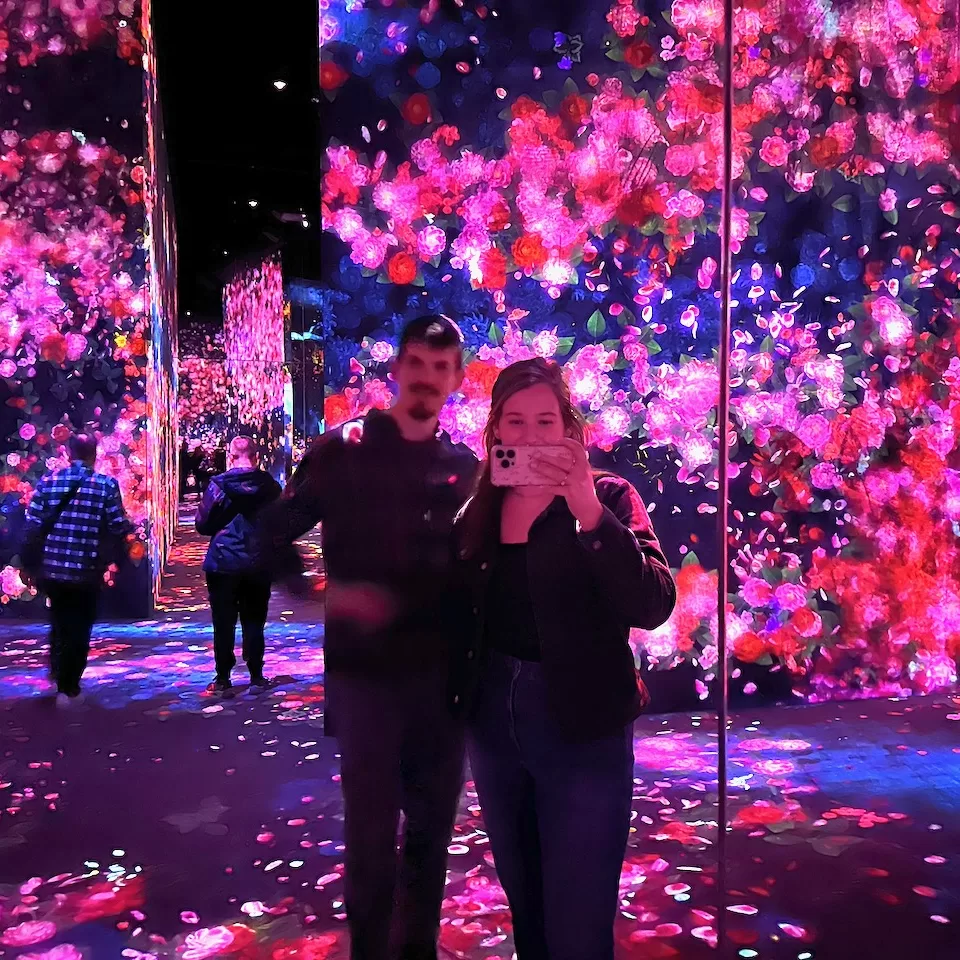
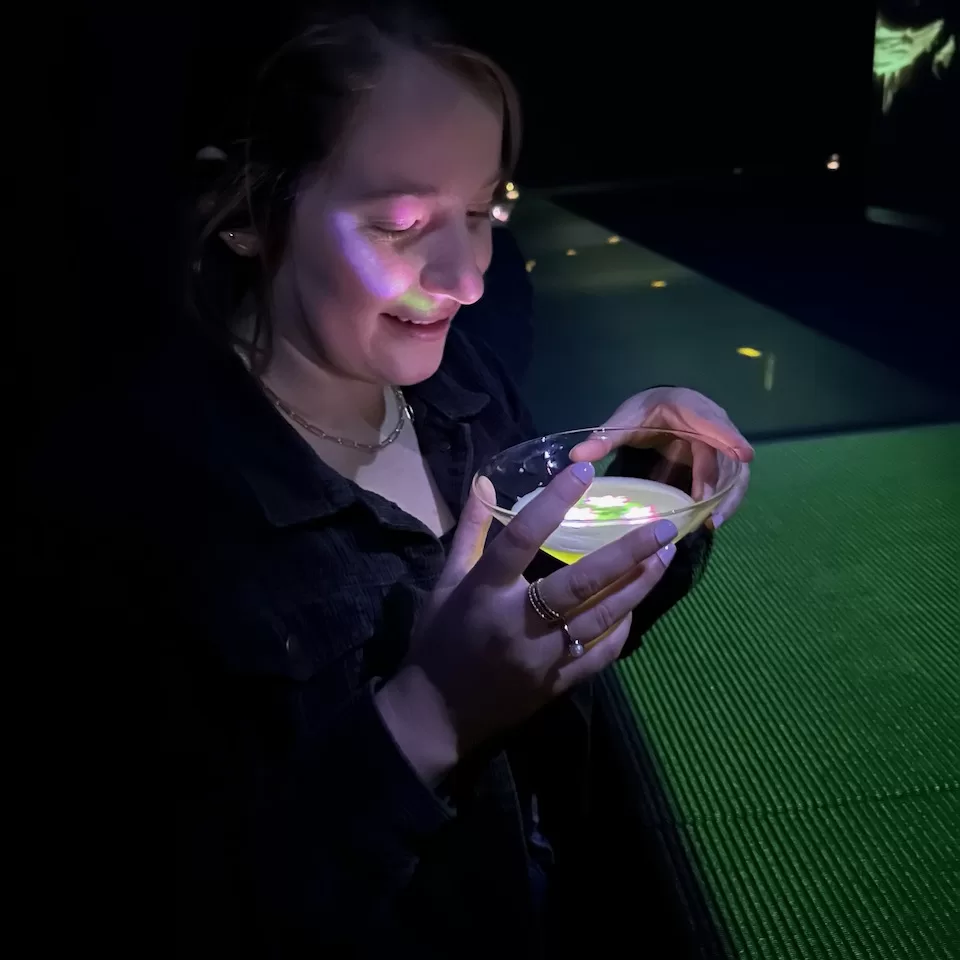

TeamLab Borderless Museum – This immersive art museum combines digital technology with interactive exhibits. Visitors walk through a series of rooms filled with constantly changing, glowing visuals that respond to your movements. Plan to spend around 2-3 hours here, as it’s easy to get lost in the magical world TeamLab has created. It is such a fun place! This is a must do when visiting Tokyo in our opinion! Don’t forget to finish your time at their tea shop where they project flowers onto your tea!
Make sure to reserve tickets well in advance, as they often sell out – https://www.teamlab.art/e/tokyo/
Afternoon – Shibuya Neighborhood
Shibuya Shopping – Head to the Shibuya neighborhood for the iconic Shibuya crossing and lots of shopping!
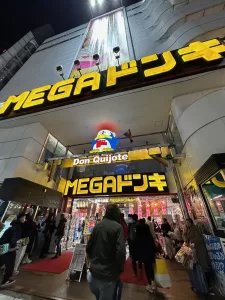
Don Quijote Mega Store – An 8-floor store selling everything from souvenirs and snacks to cosmetics and electronics. Don Quijote is a one-stop shop for affordable, quirky finds and is popular among travelers. It’s easy to get lost in this store, but I would recommend checking out the authentic candy, snacks, and cosmetics to start!
Dinner
Uobei Sushi – A super cool conveyor belt sushi restaurant, with fresh, made to order sushi starting at just 110 yen a piece! Just a few minutes walk from Shibuya station.
Evening – Shibuya Crossing
Witness the organized chaos of one of the world’s busiest pedestrian crossings. The intersection lights up at night, making it the perfect time to take in the iconic sight. For the best views, head to a nearby café or the second-floor Starbucks for a bird’s-eye view. Spend the rest of the night enjoying walking around the Shibuya neighborhood!
Day 4 – Final Day in Tokyo & Cherry Blossom Views
On your last day in Tokyo, I thought it would be fitting to squeeze in a few more cherry blossom spots! I also love to give some “free time” as I like to call it in all of my itineraries. I would encourage you to leave this last afternoon completely open for whatever you feel like doing. Whether it’s going back to your favorite neighborhood or spot to eat, or just relaxing at Sumida Park awhile longer and enjoying the cherry blossoms, it’s totally up to you!

Cherry Blossom Viewing Spot #1: Chidorigafuchi Moat – One of Tokyo’s most iconic cherry blossom spots, Chidorigafuchi offers a breathtaking experience with cherry trees lining the moat near the Imperial Palace. In late February, you may spot some early blooms, and even if you’re slightly ahead of the full bloom season, this spot is beautiful year-round. You can even rent a rowboat to take in the blossoms from the water.
Cherry Blossom Viewing Spot #2: Sumida Park – Located near Asakusa along the Sumida River, this park has over 1,000 cherry trees lining the riverbanks. A lovely morning or afternoon stroll provides amazing views, and you can catch glimpses of the Tokyo Skytree rising above the blooms, creating a memorable Tokyo skyline.
Spend the rest of the day doing anything you missed from the previous 3 days, and breathe in the sights and sounds of Tokyo before you move on tomorrow!
I hope this itinerary was super helpful when planning your trip to Tokyo! I would so appreciate it if you could leave a comment below if this helped you. Thanks so much for reading!
Megan
Pin this post to save it for later
